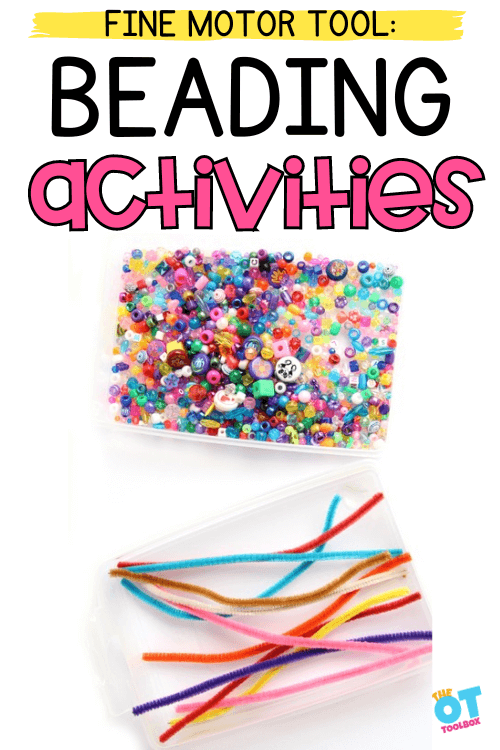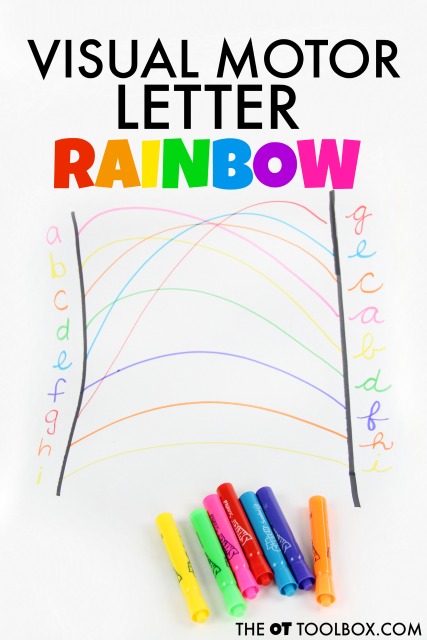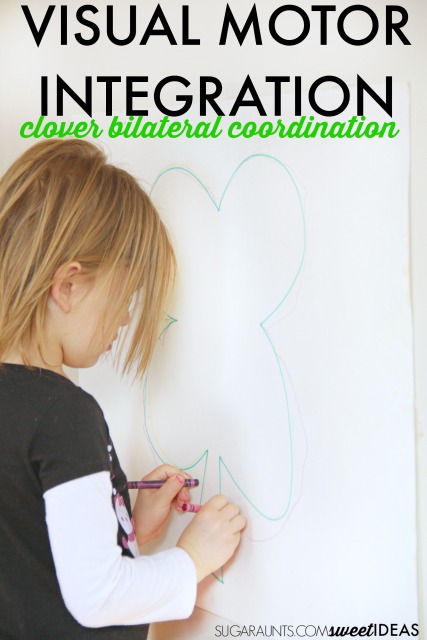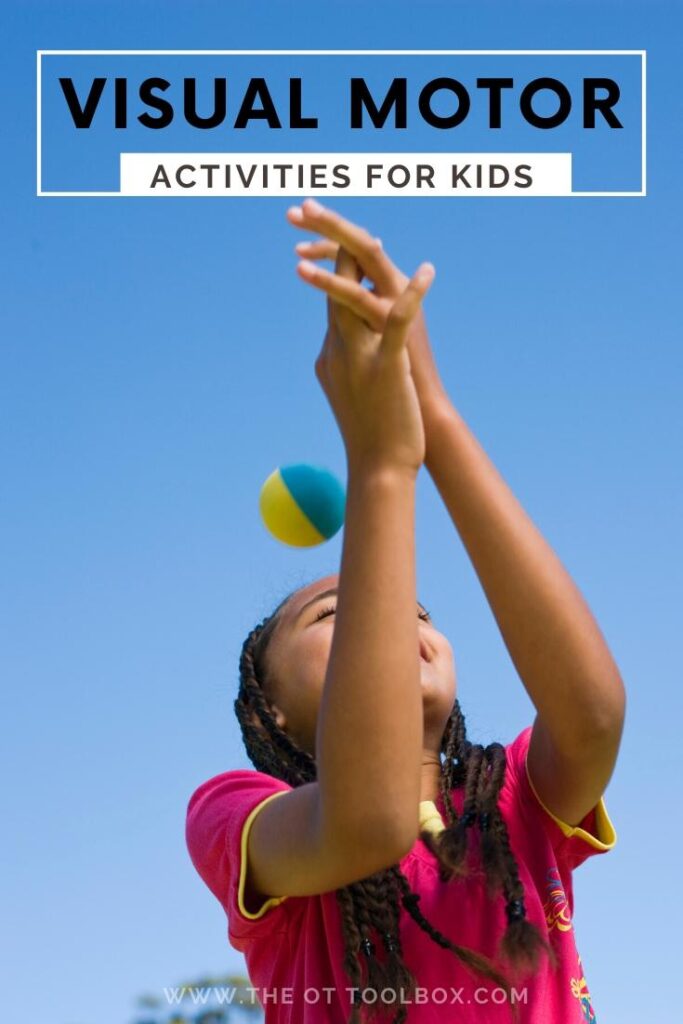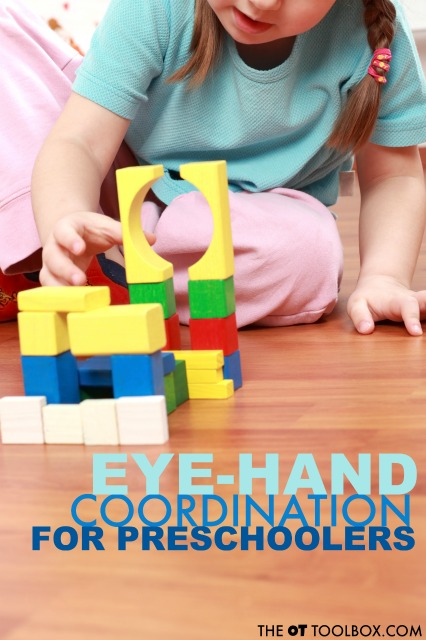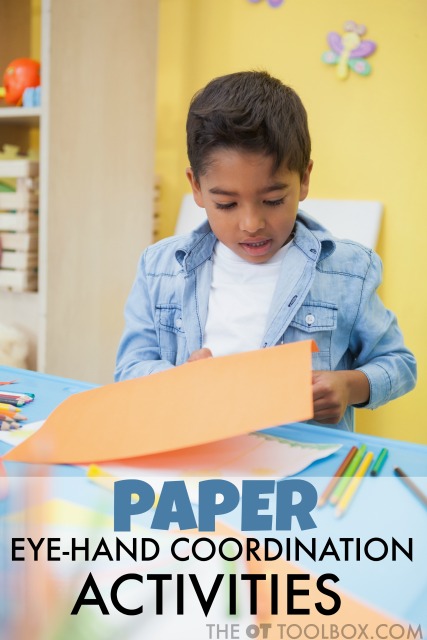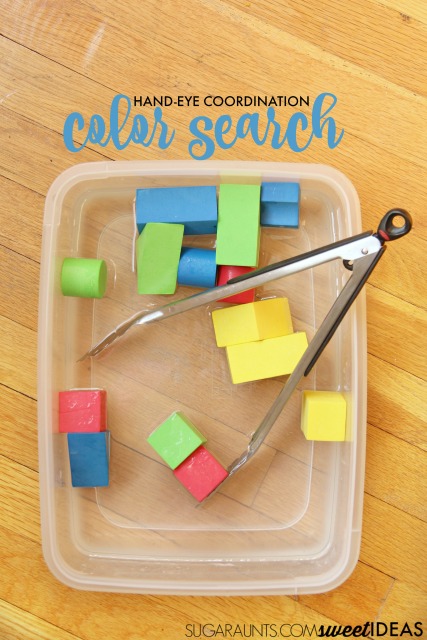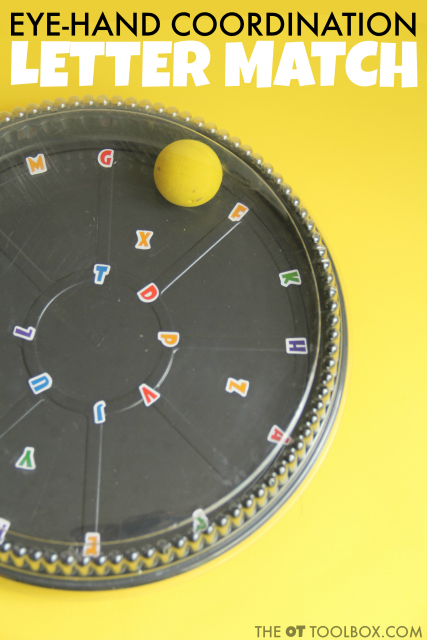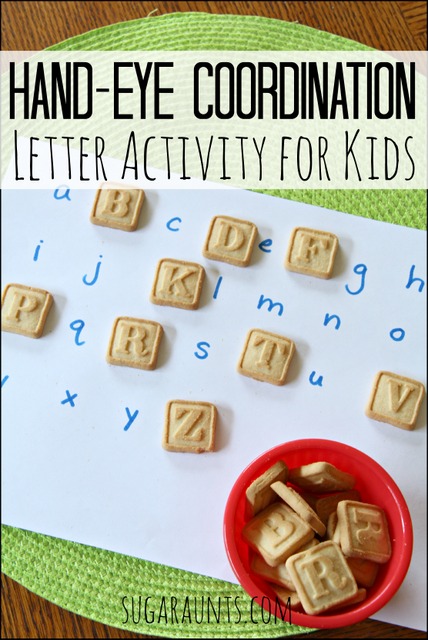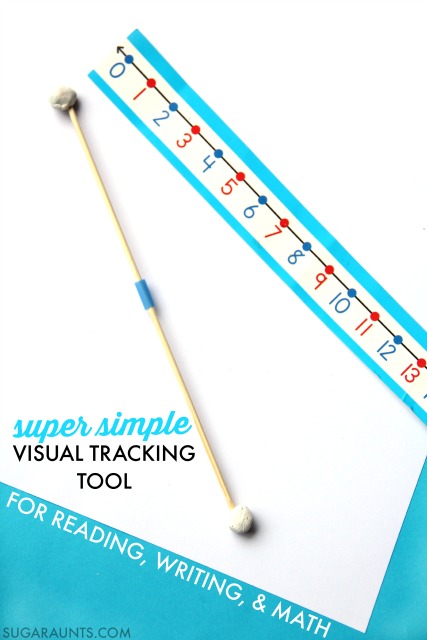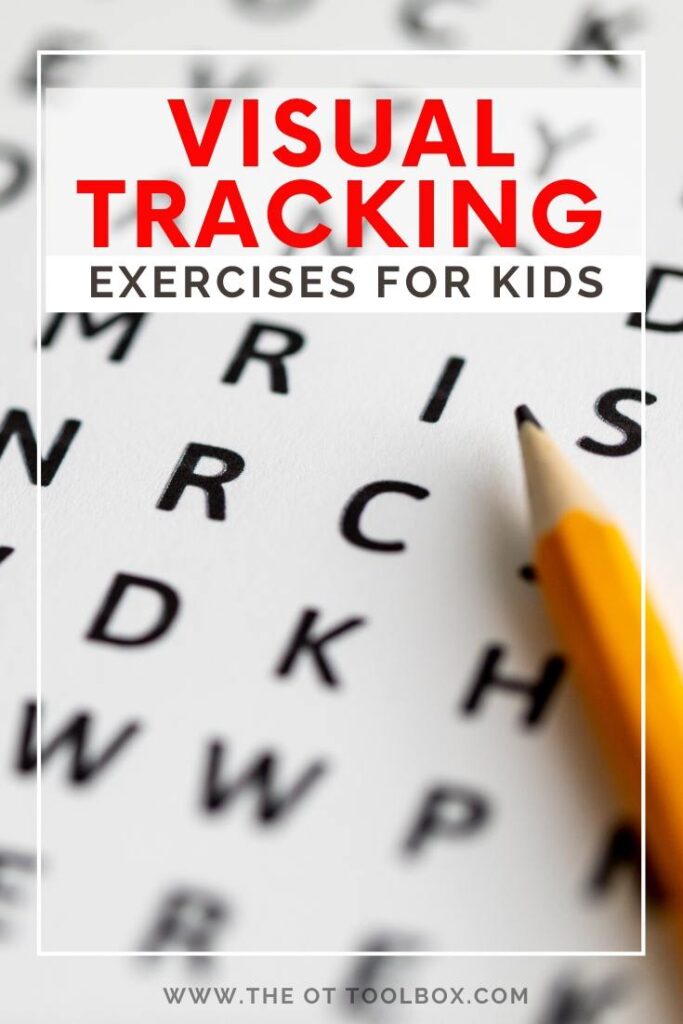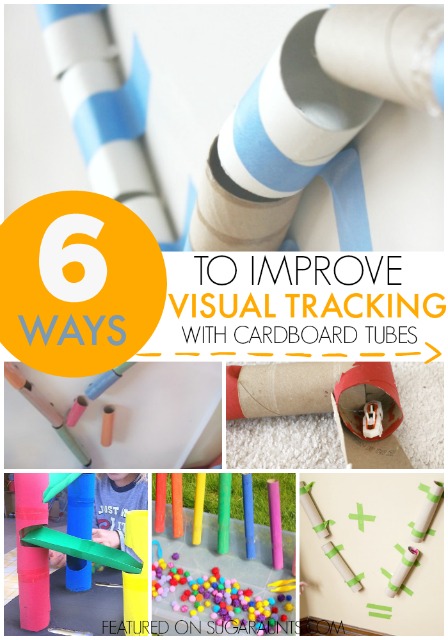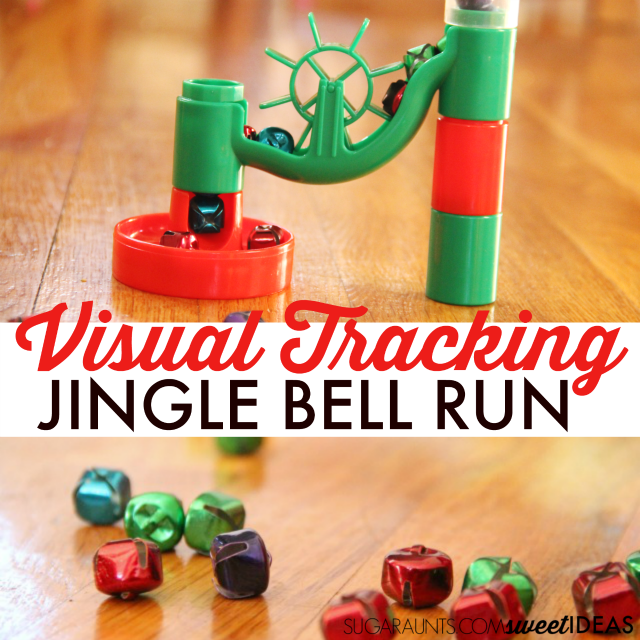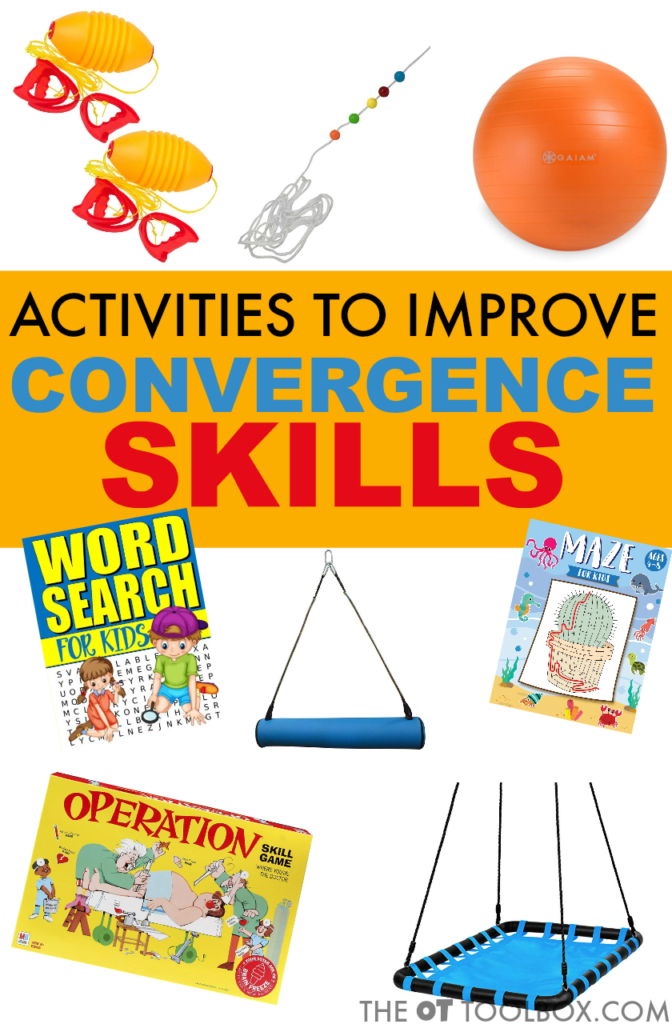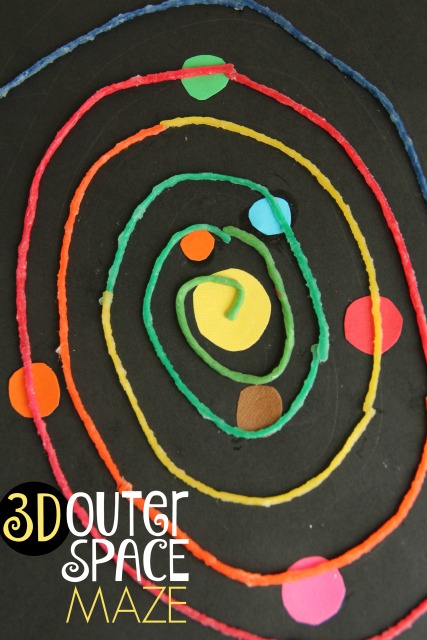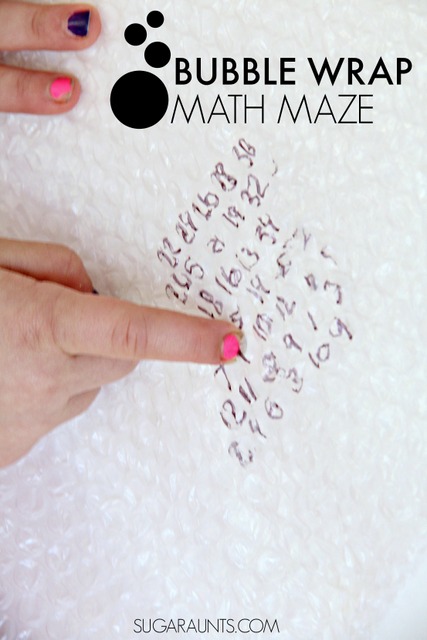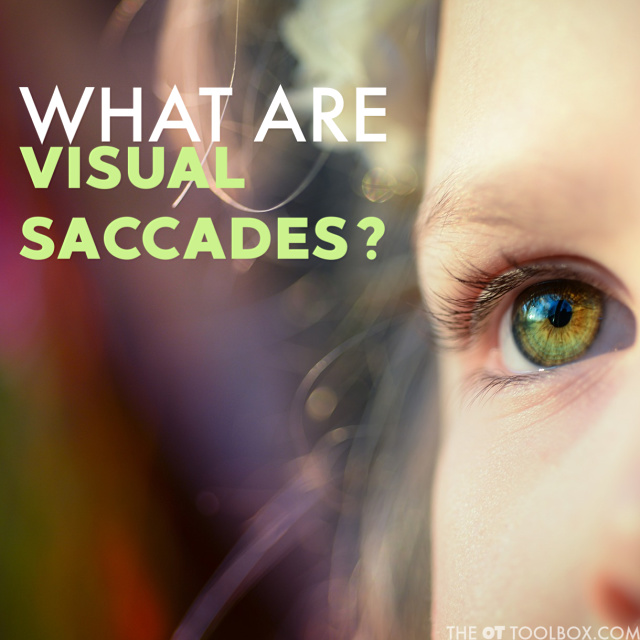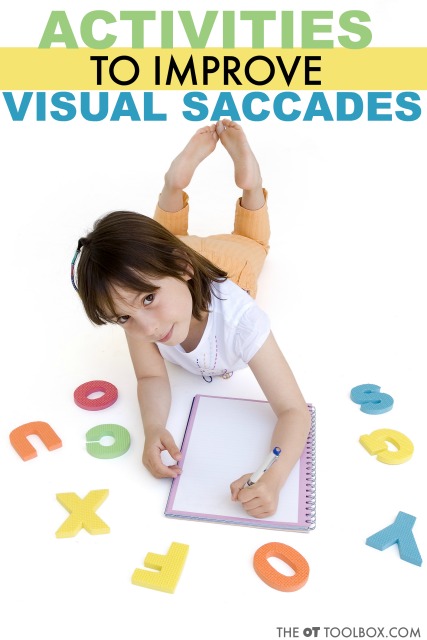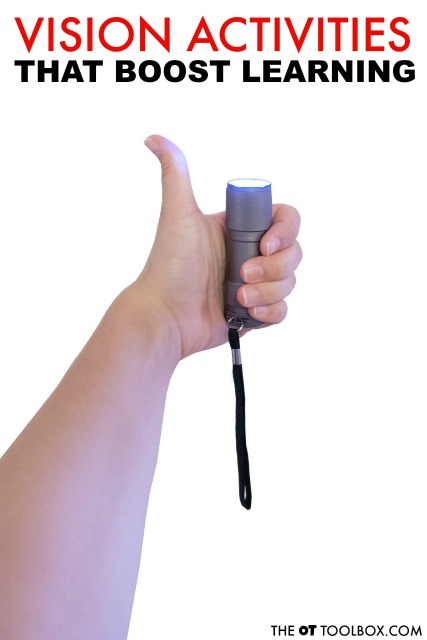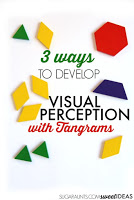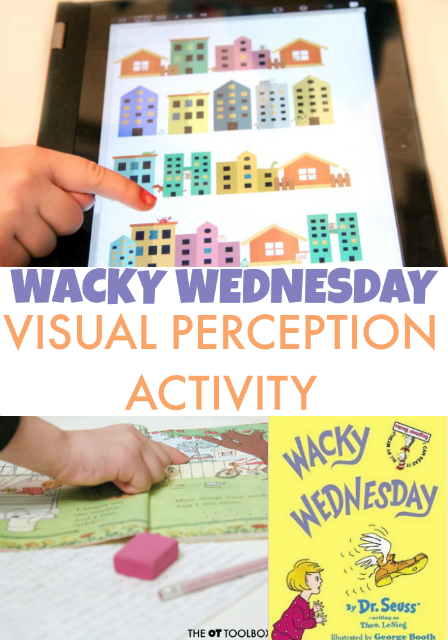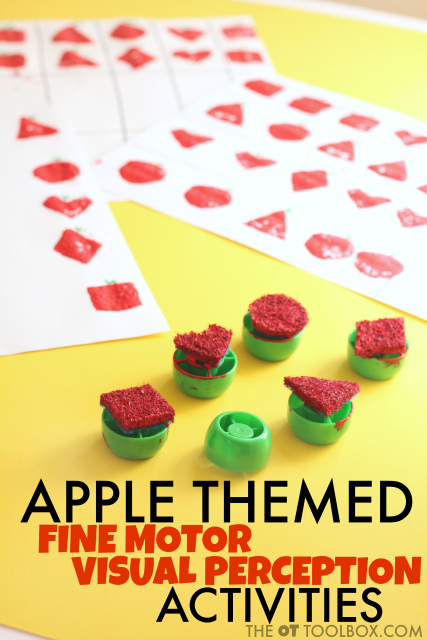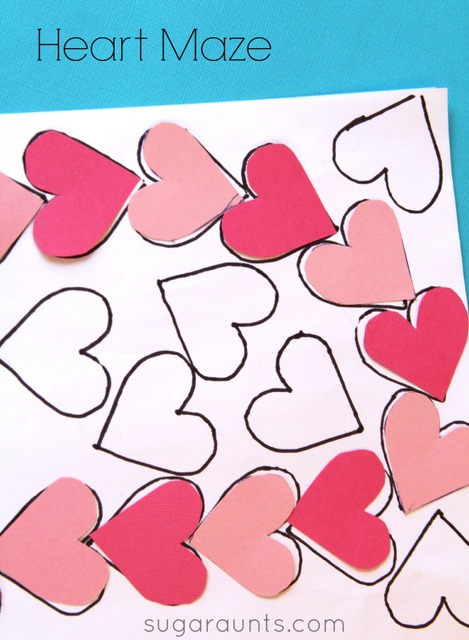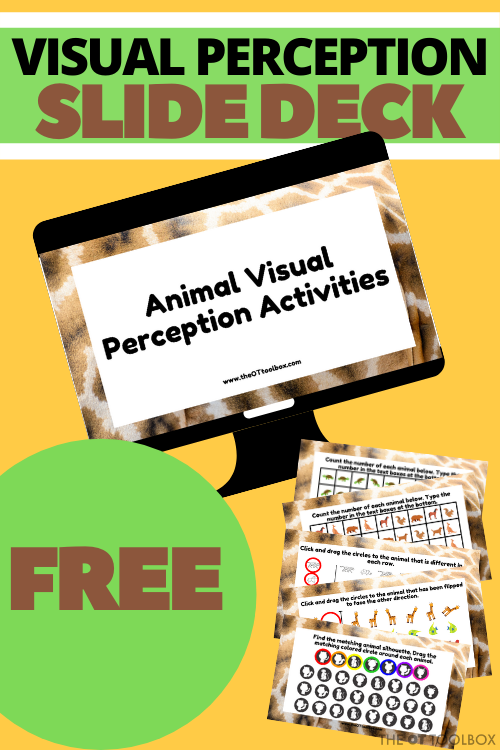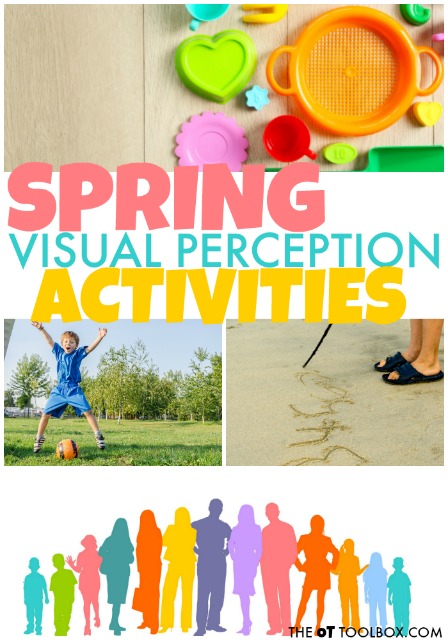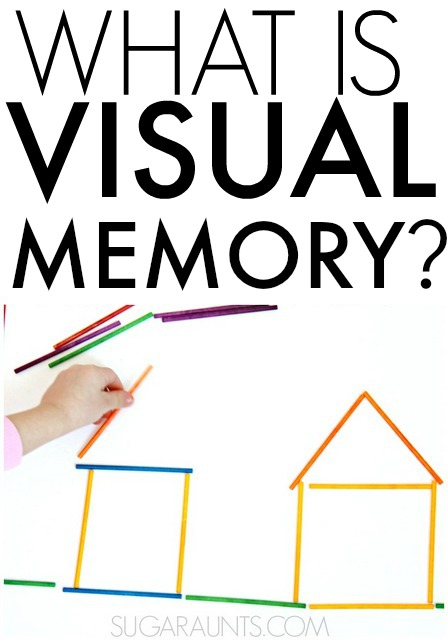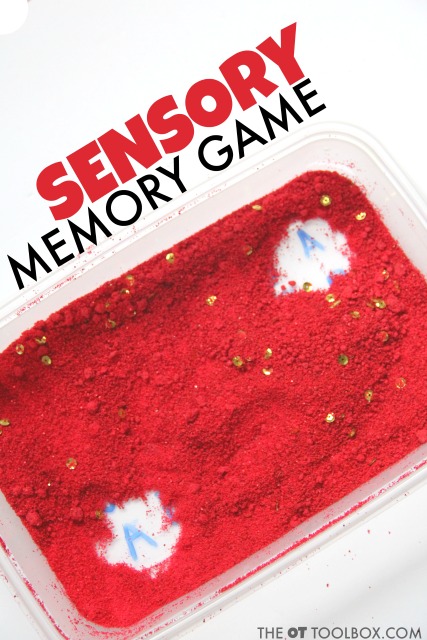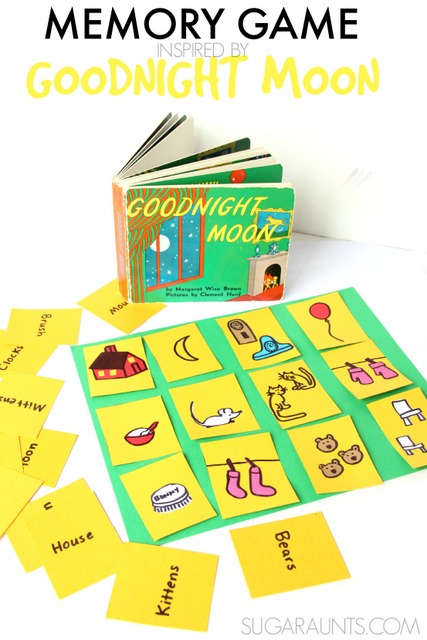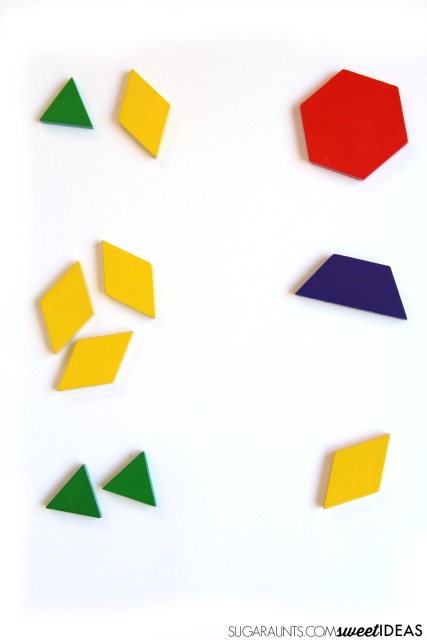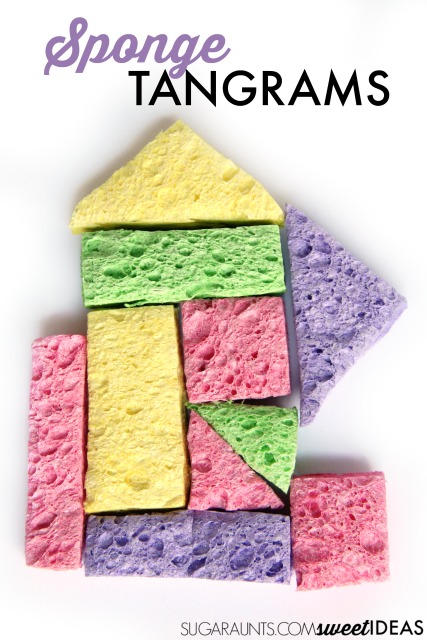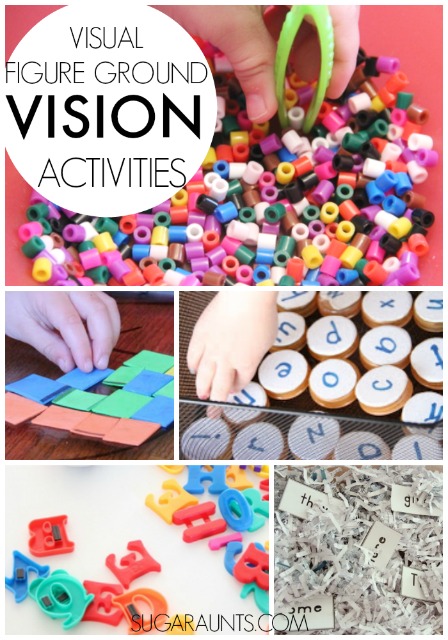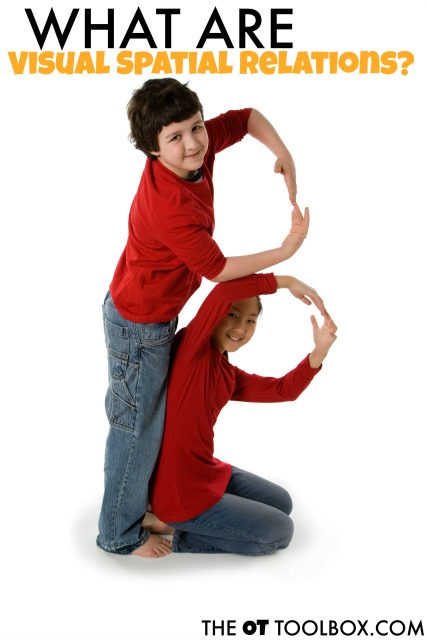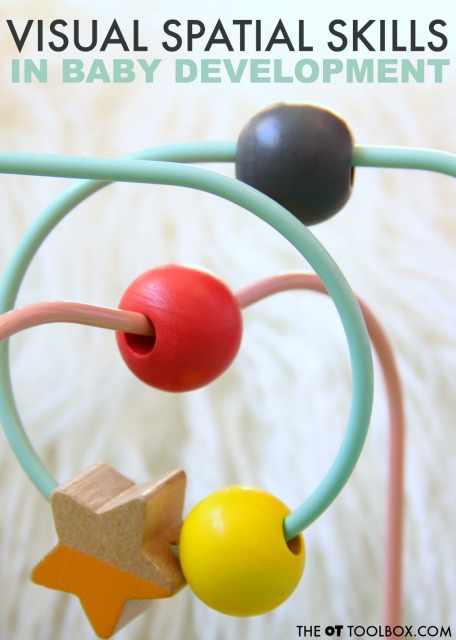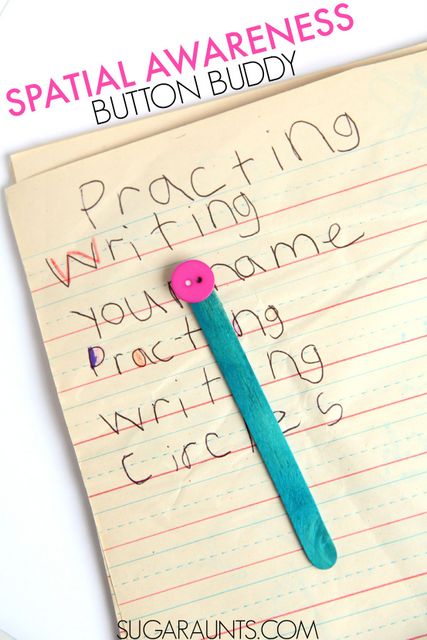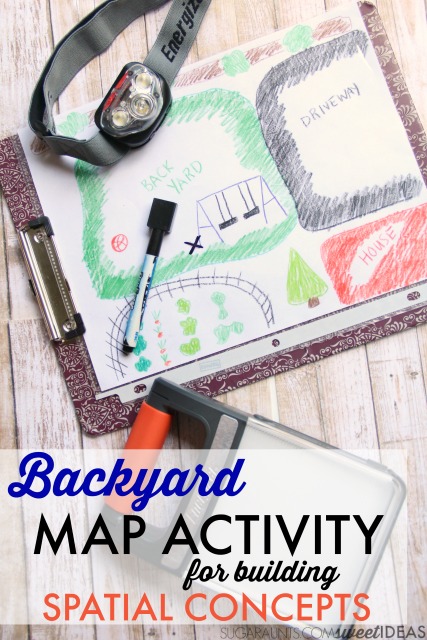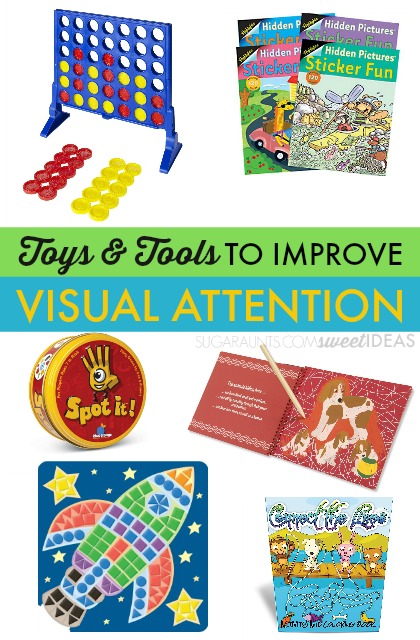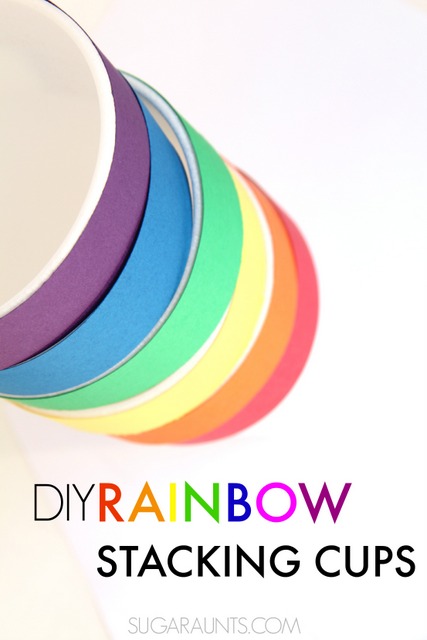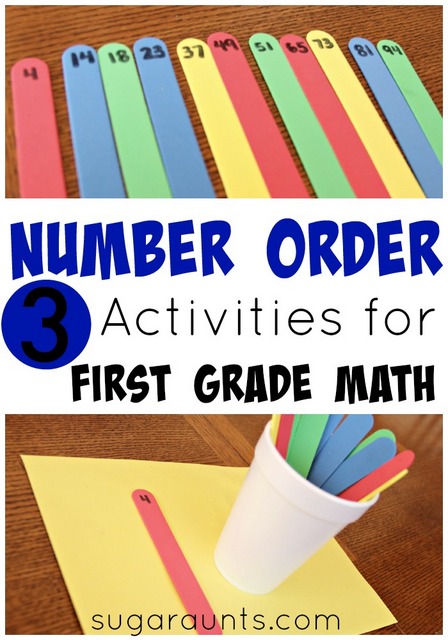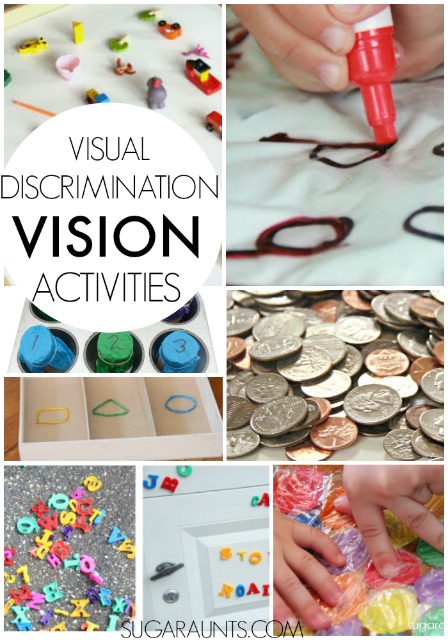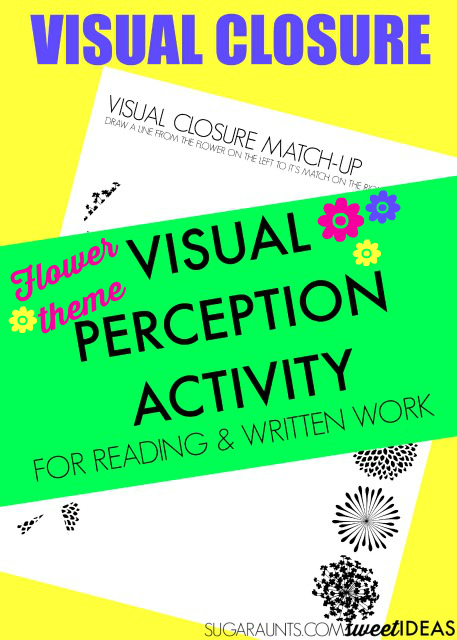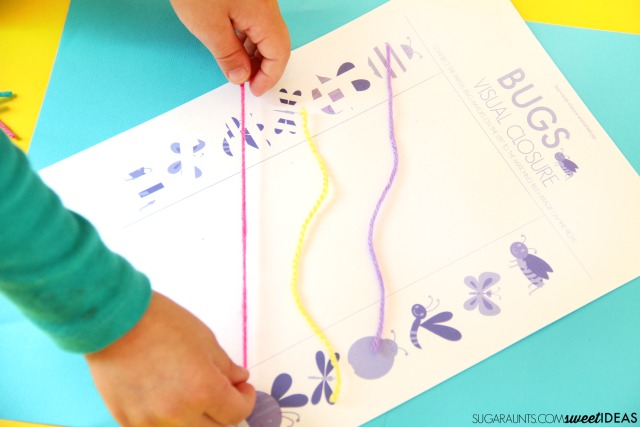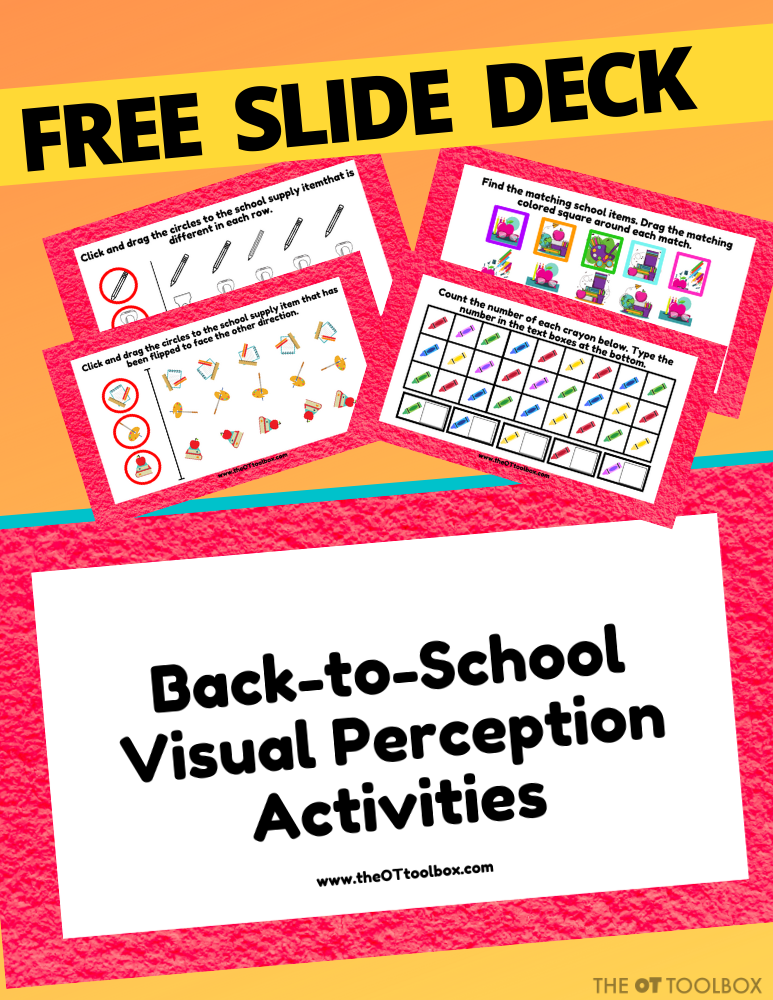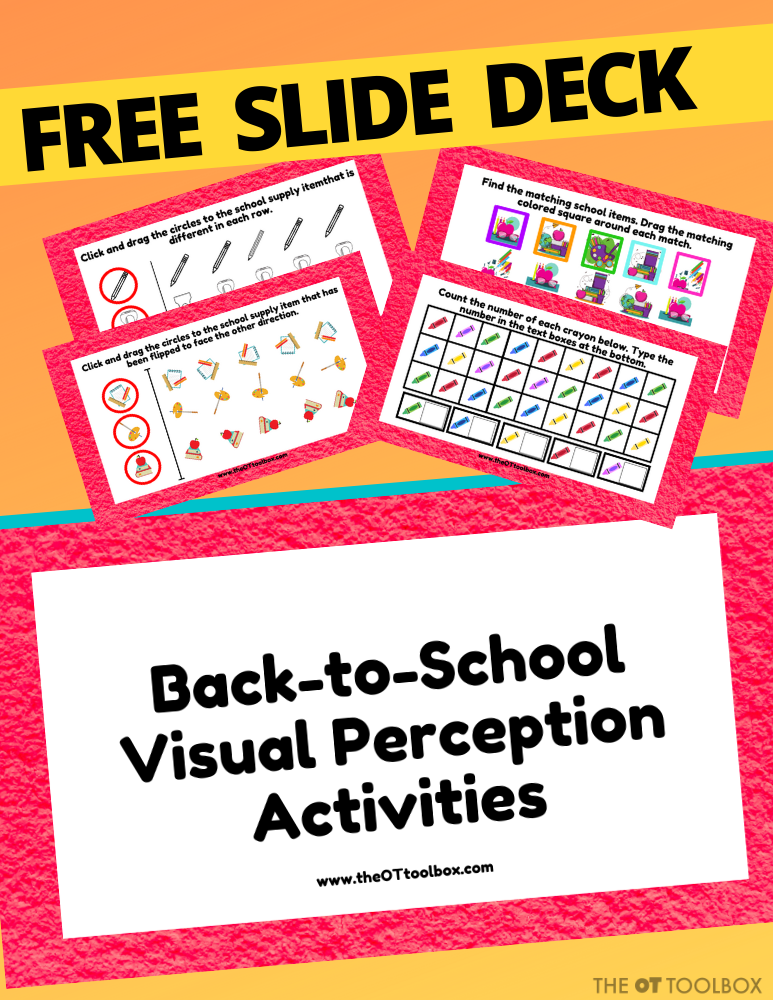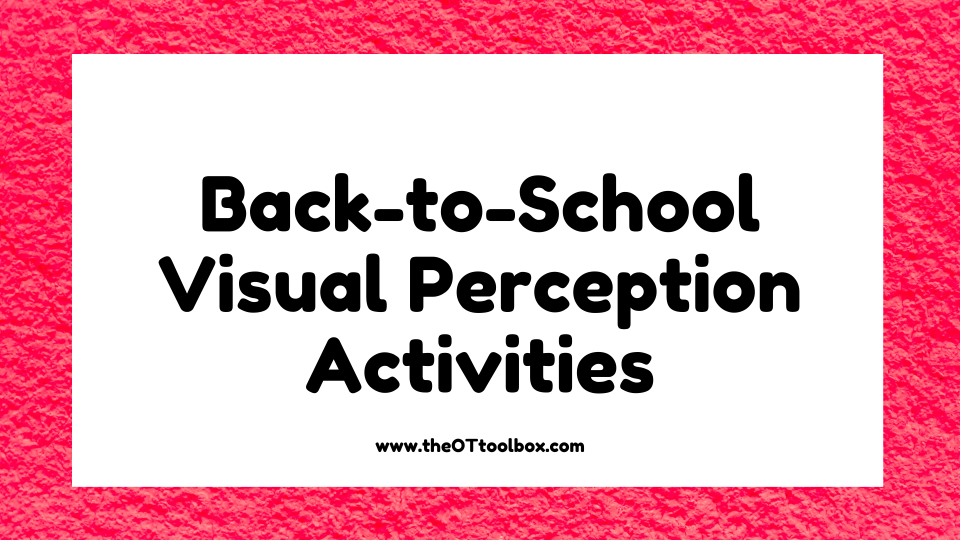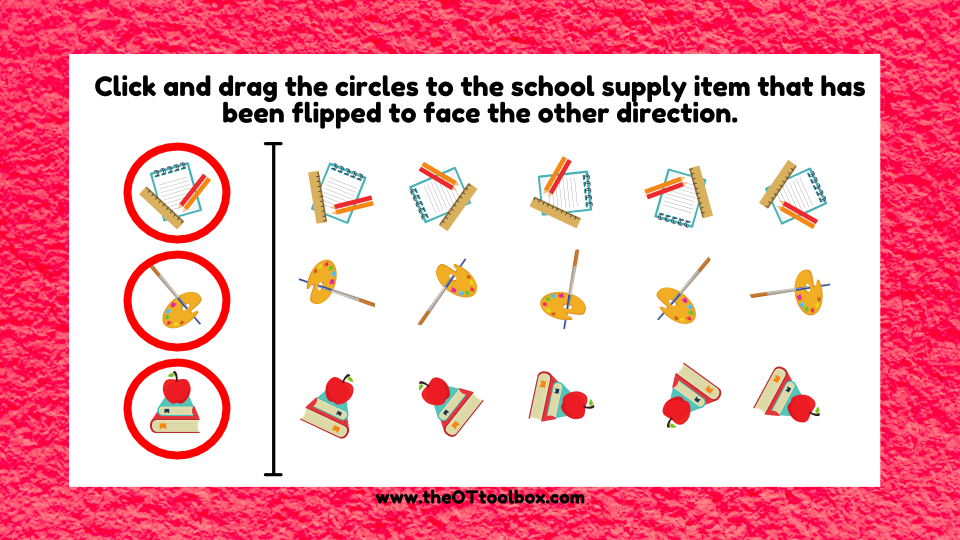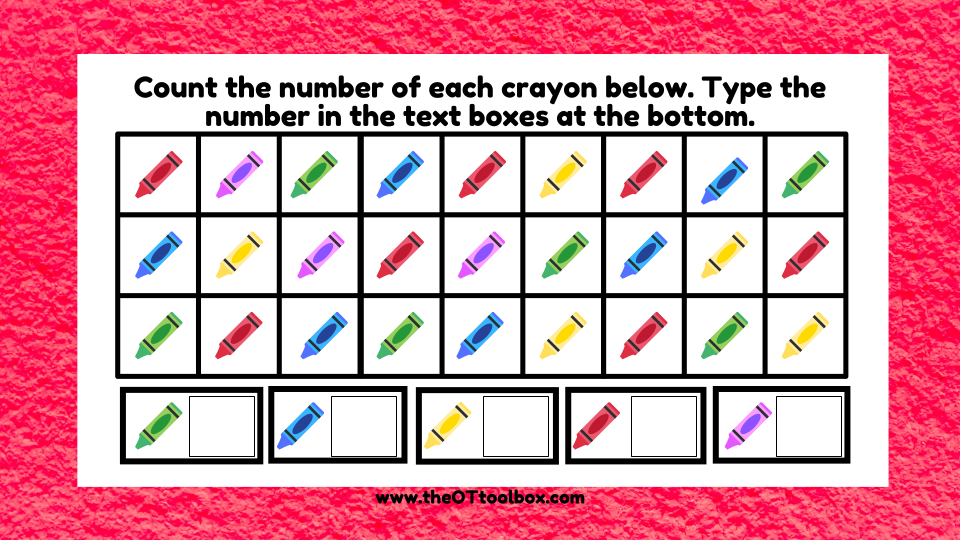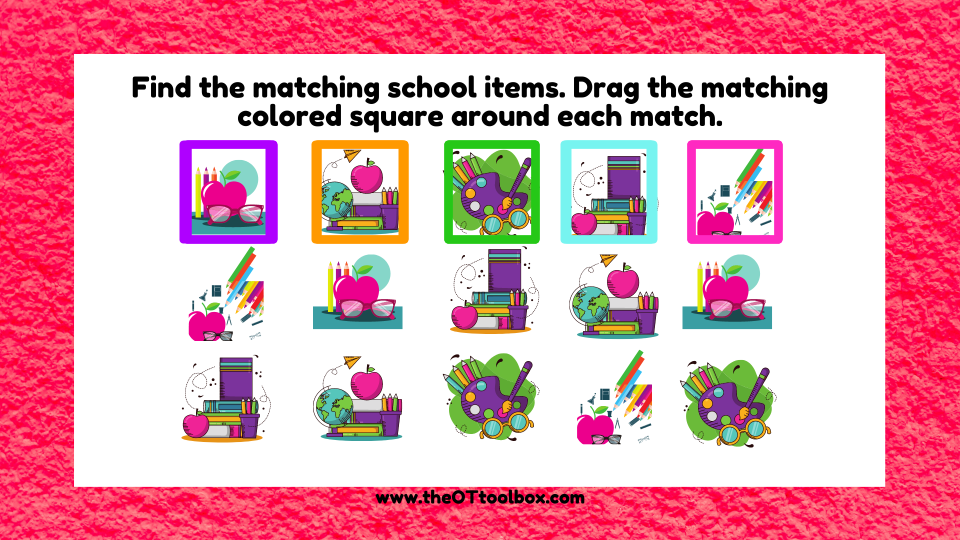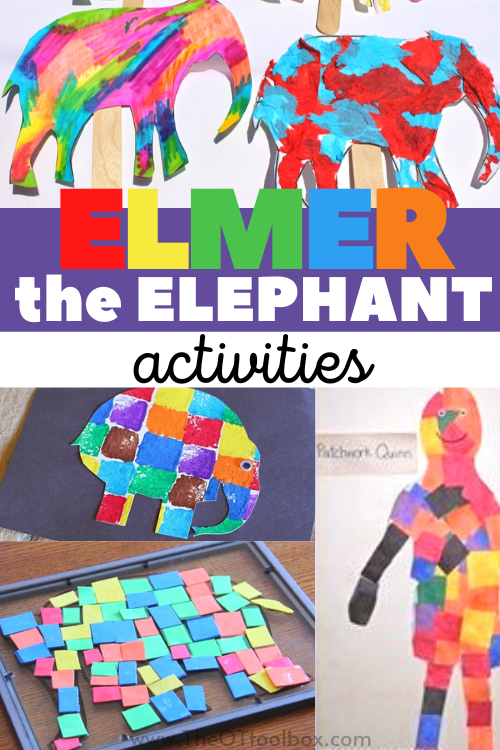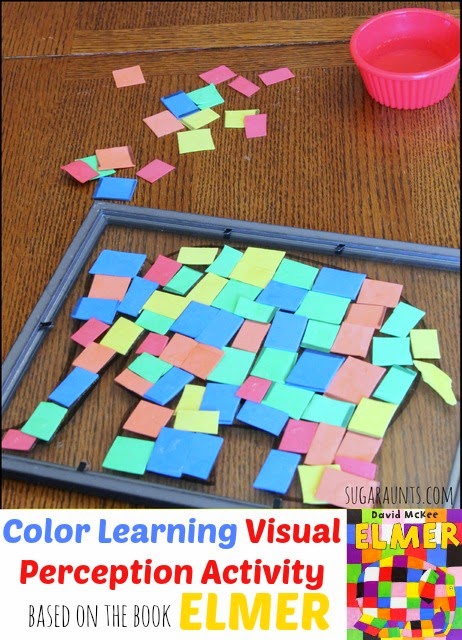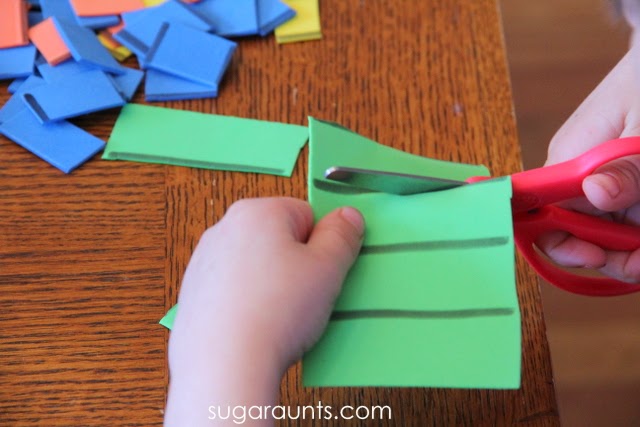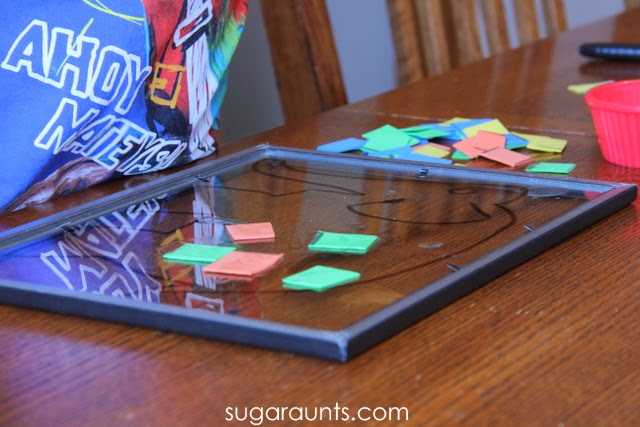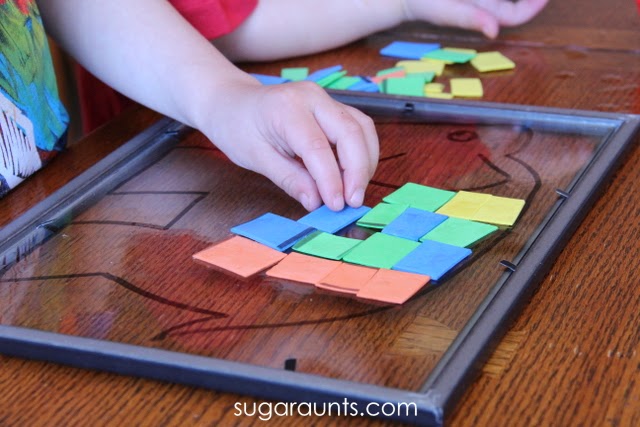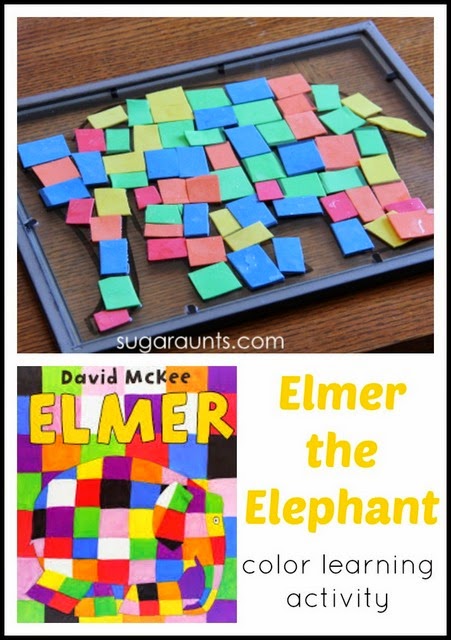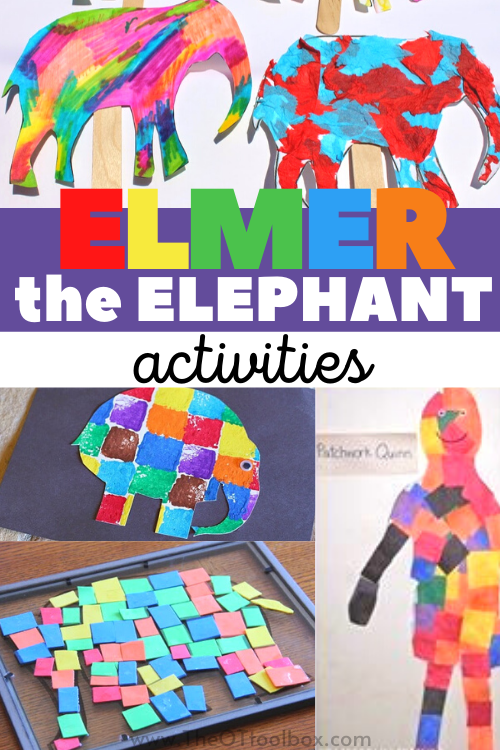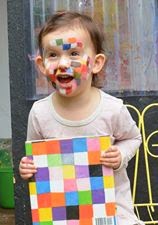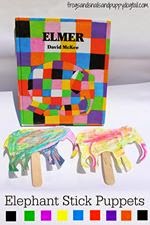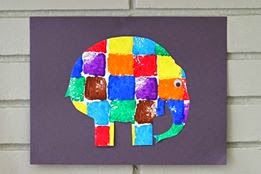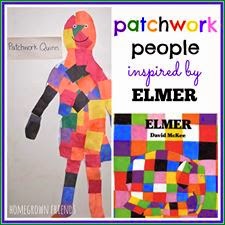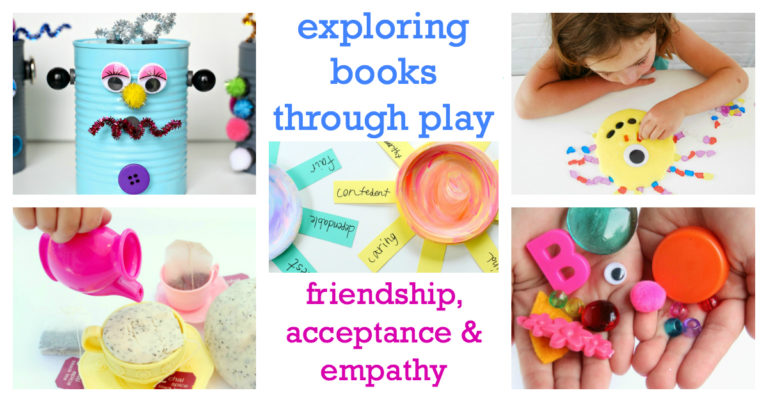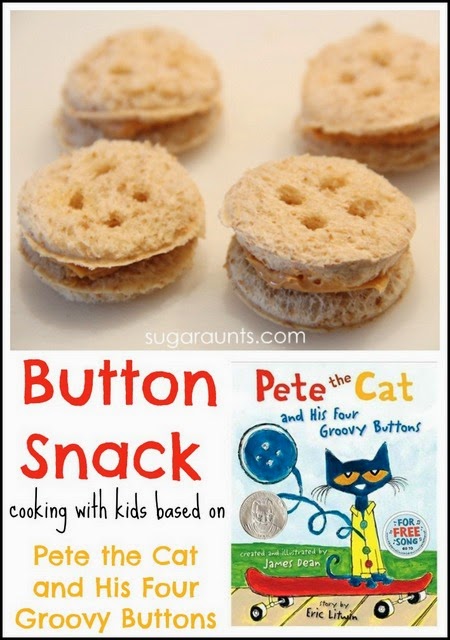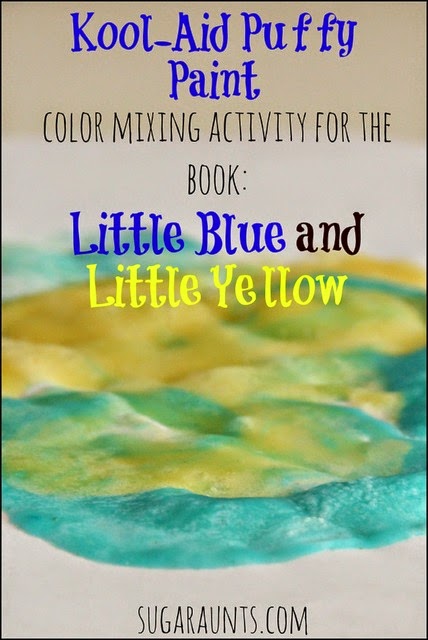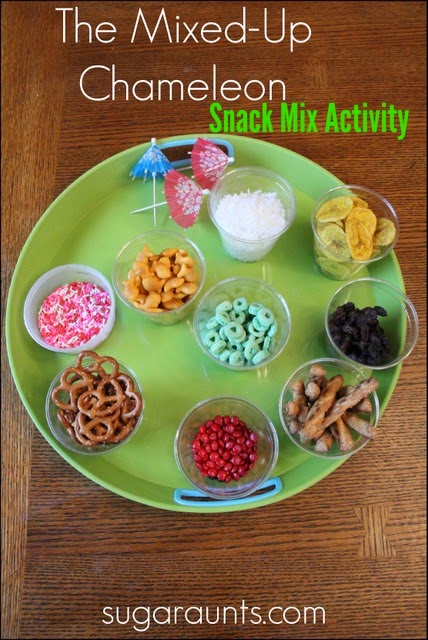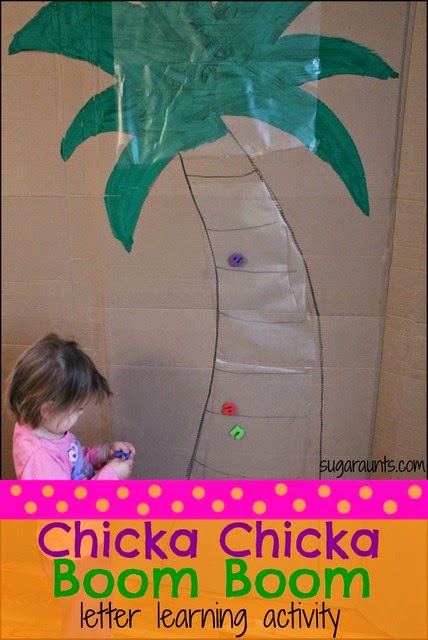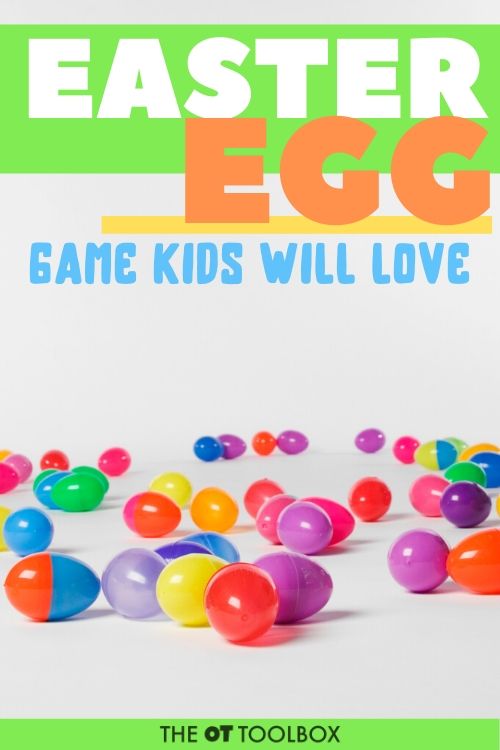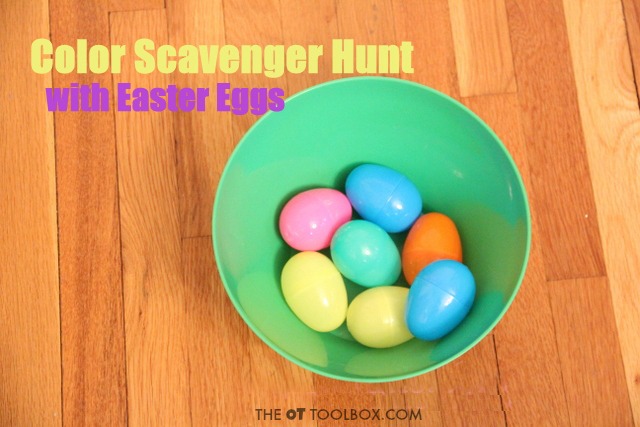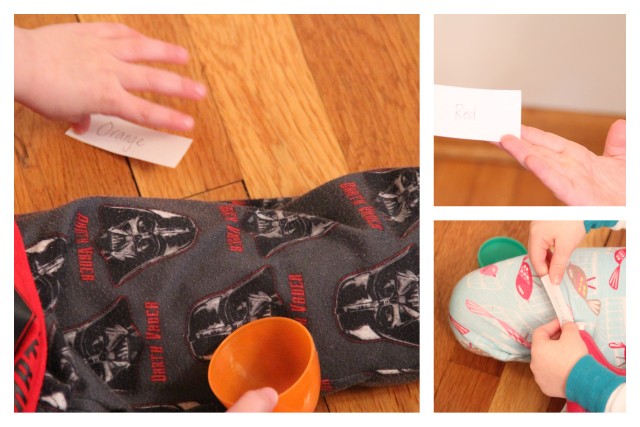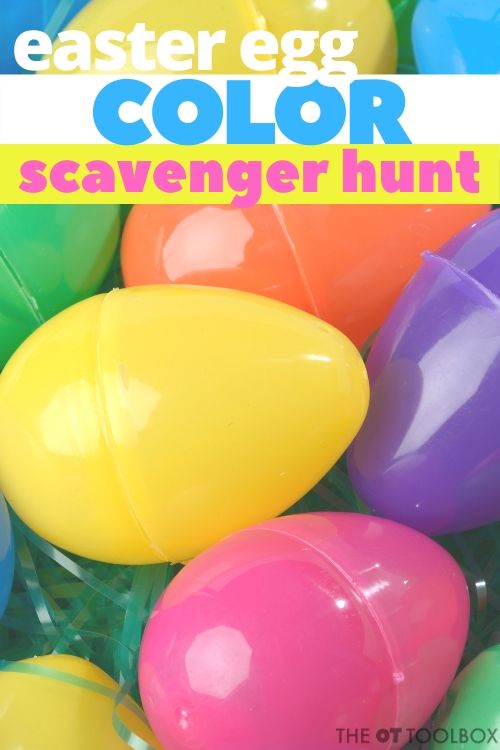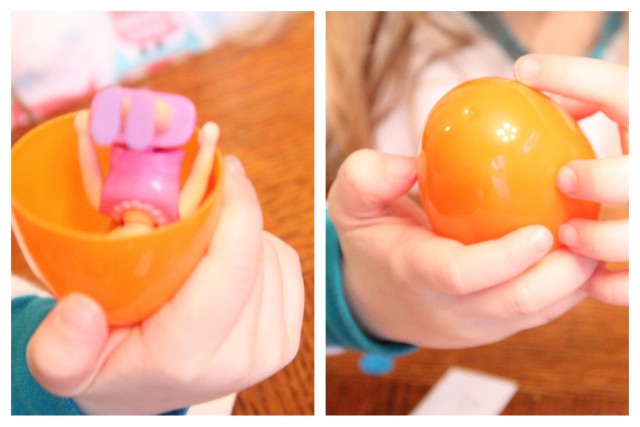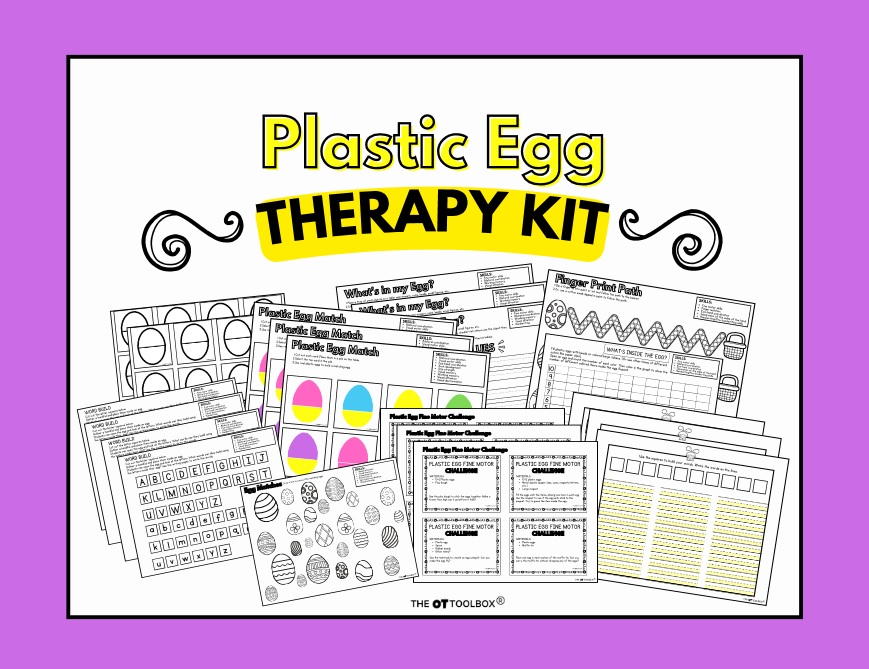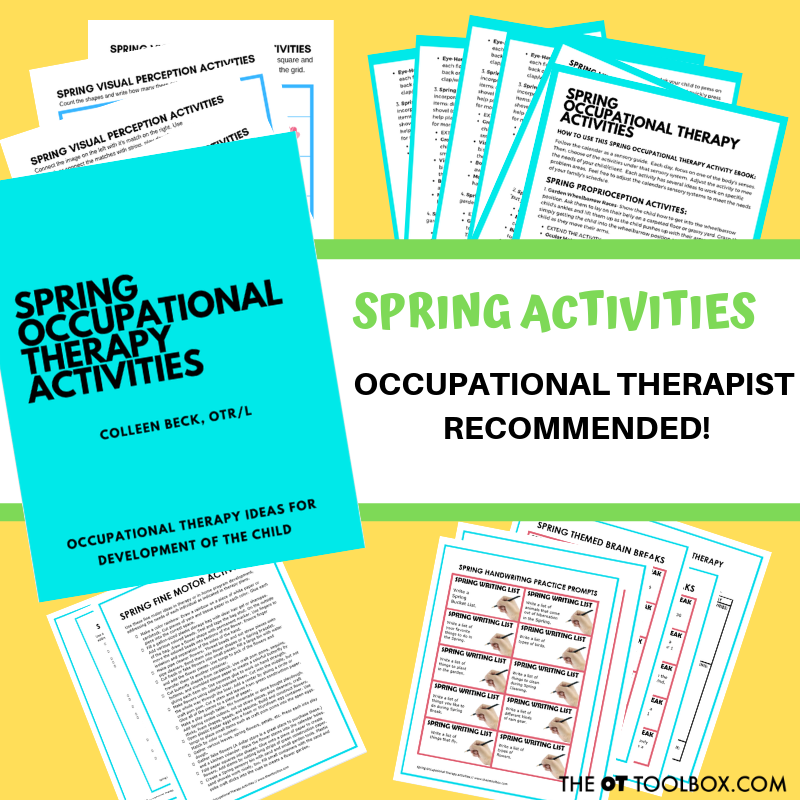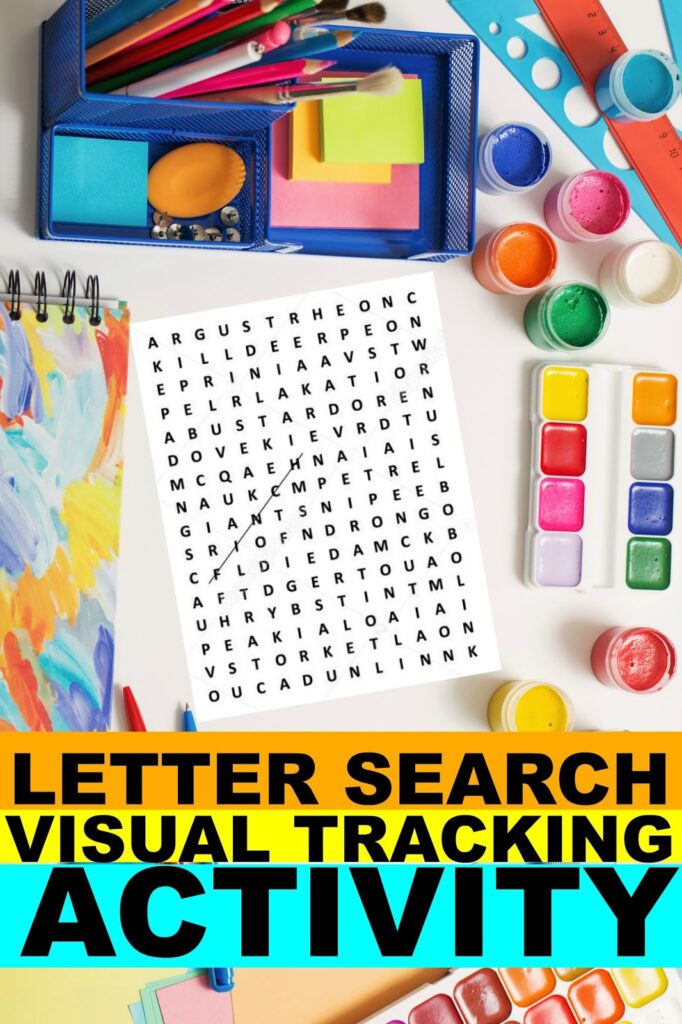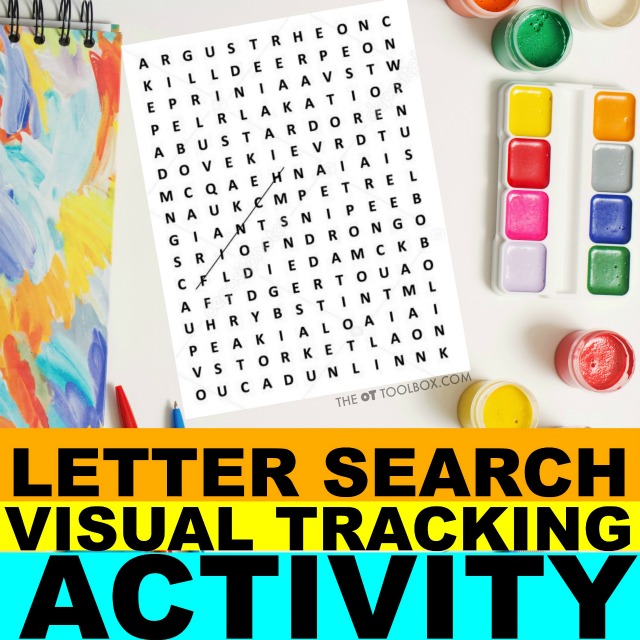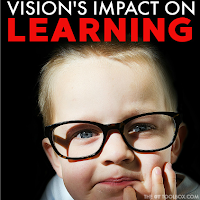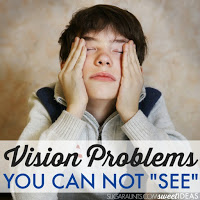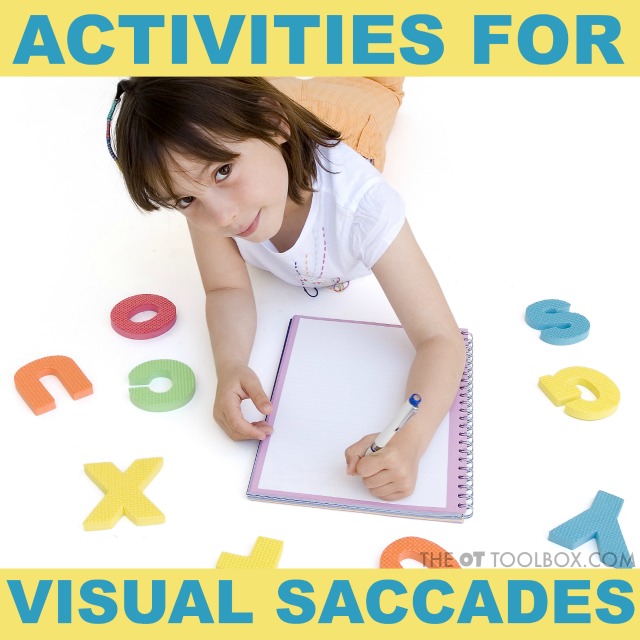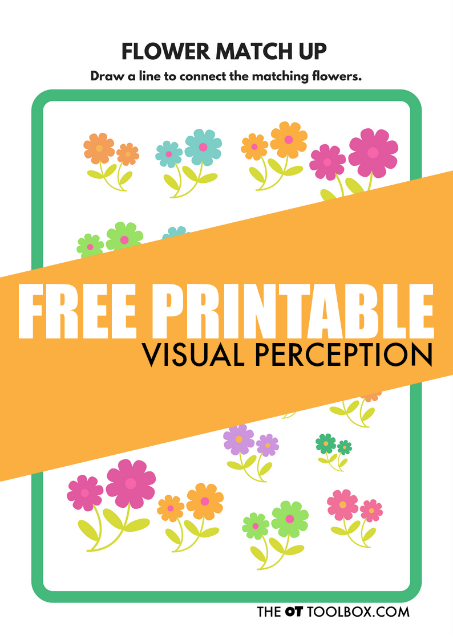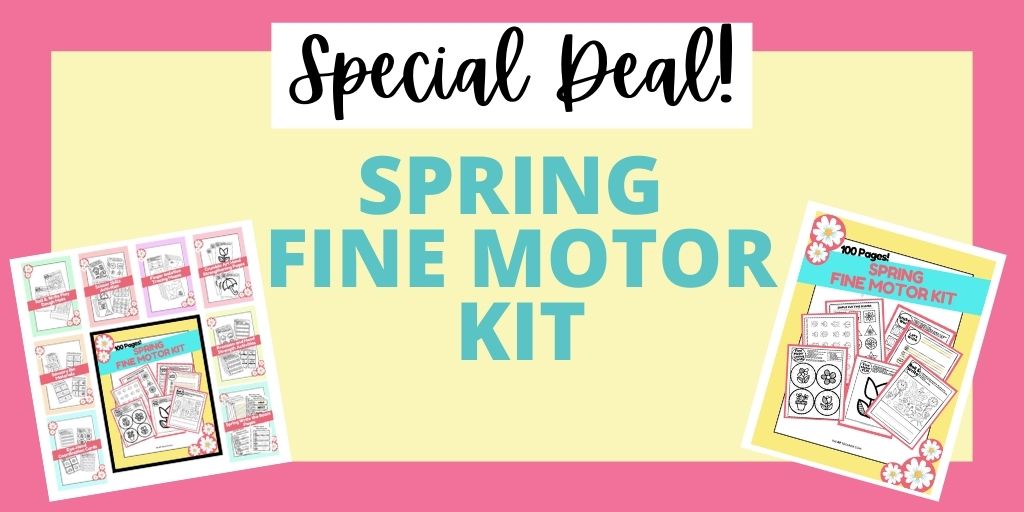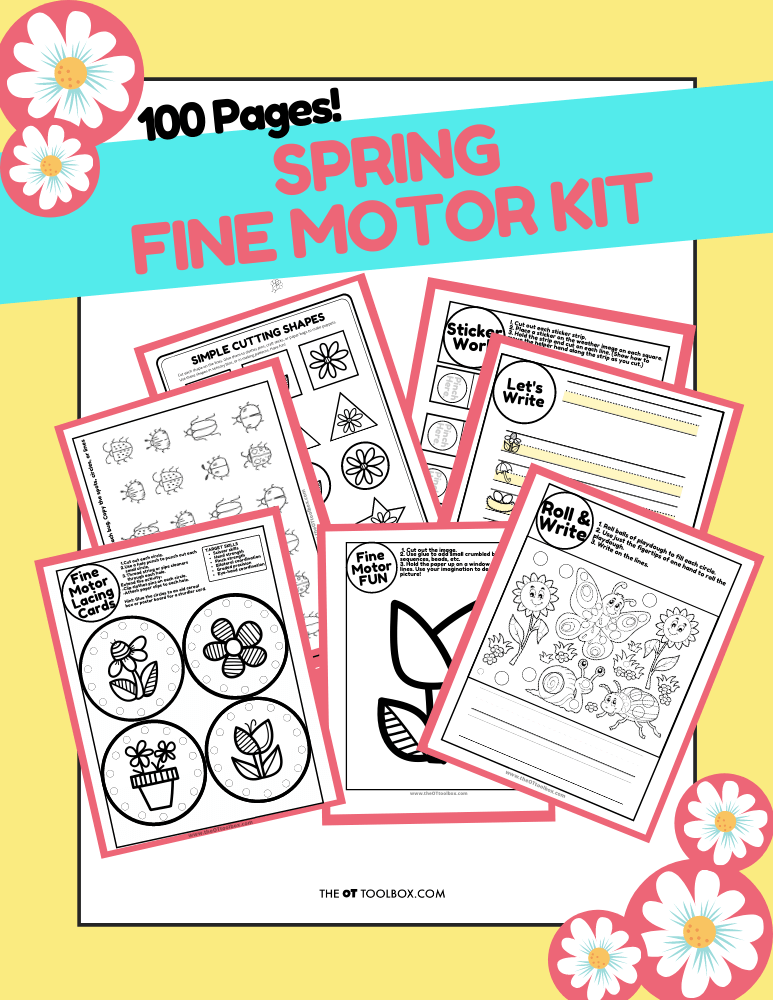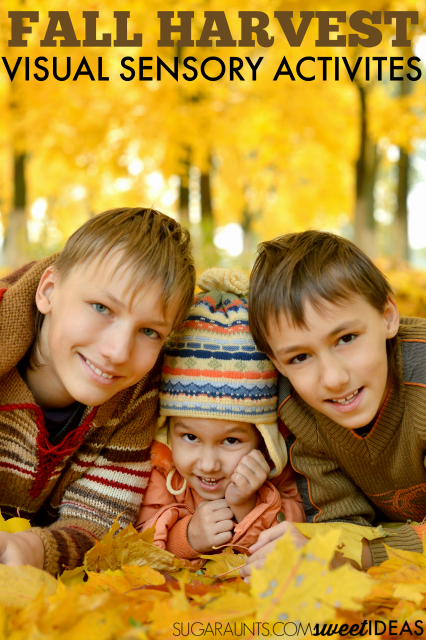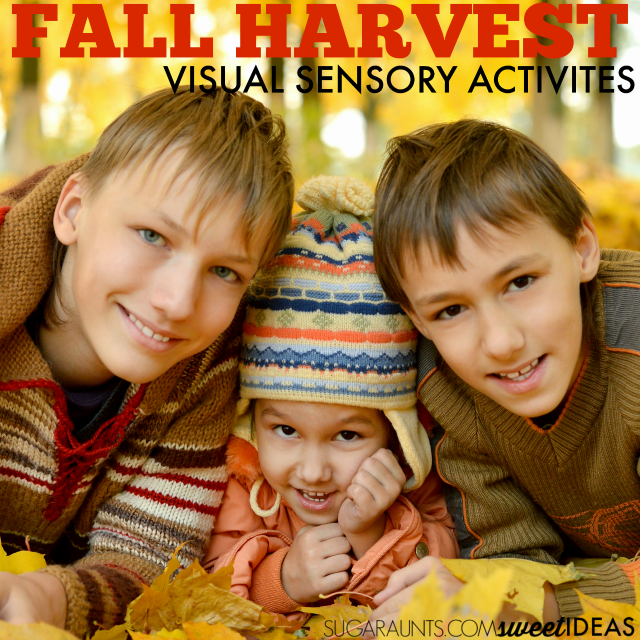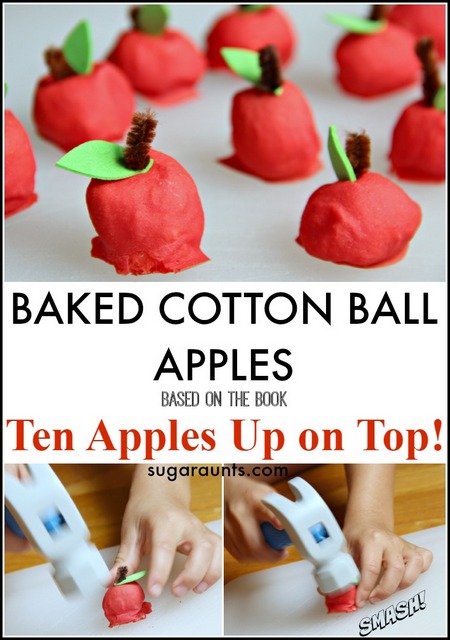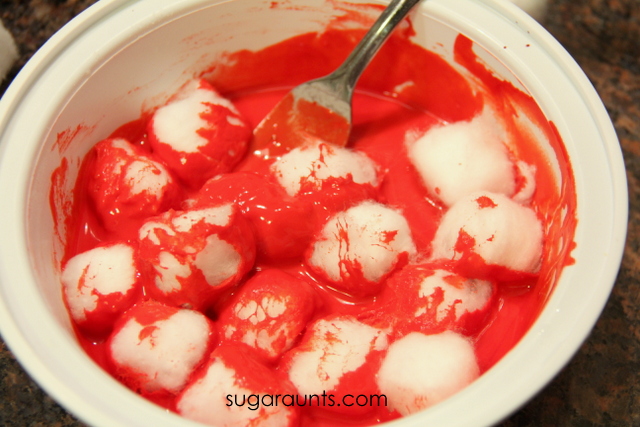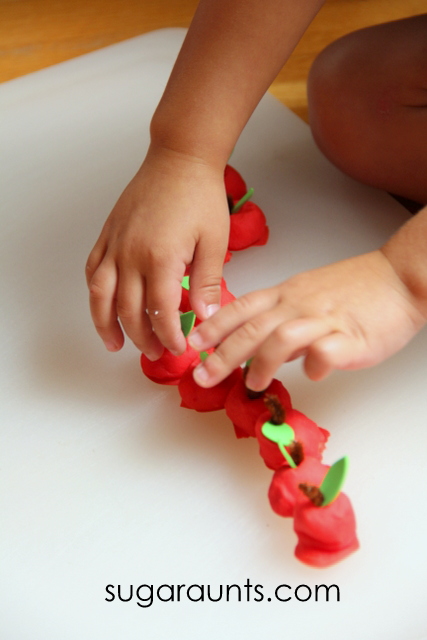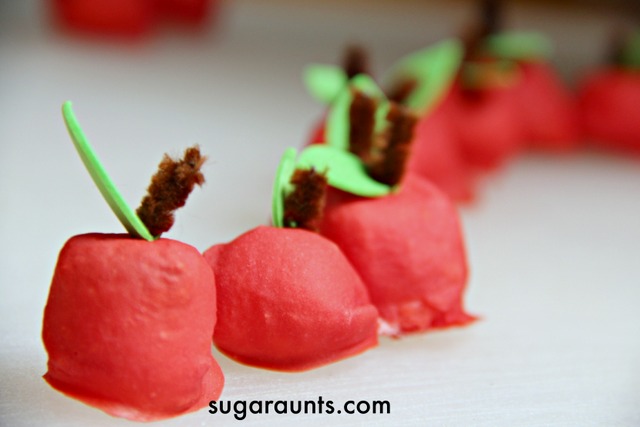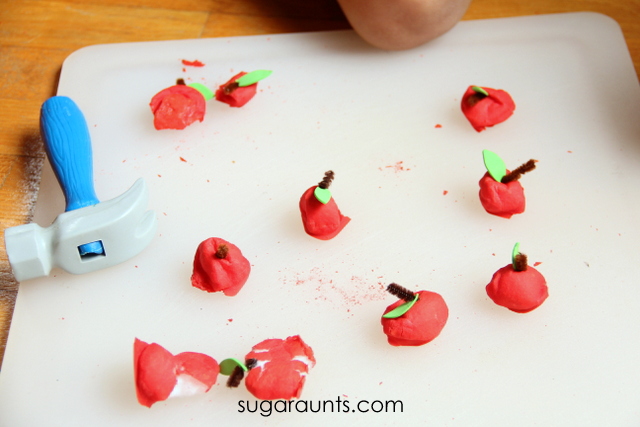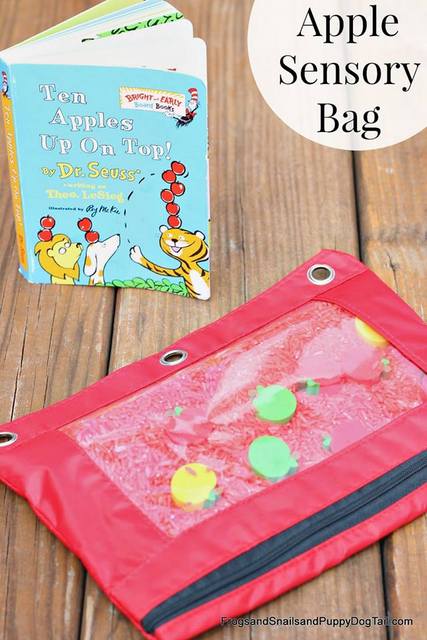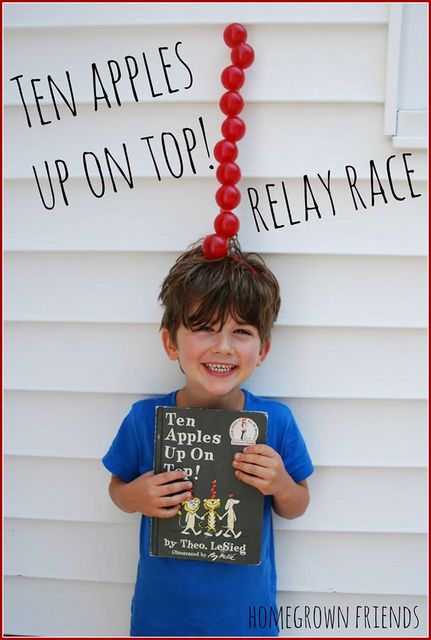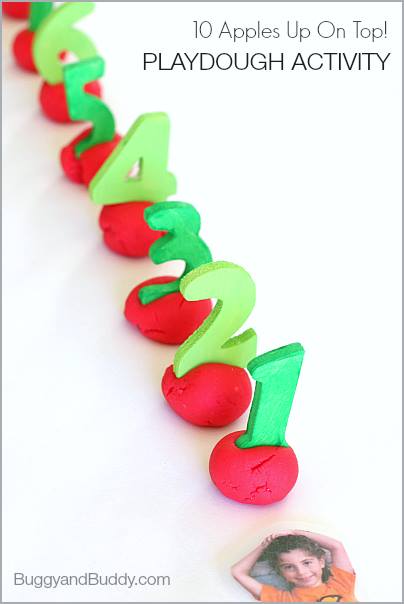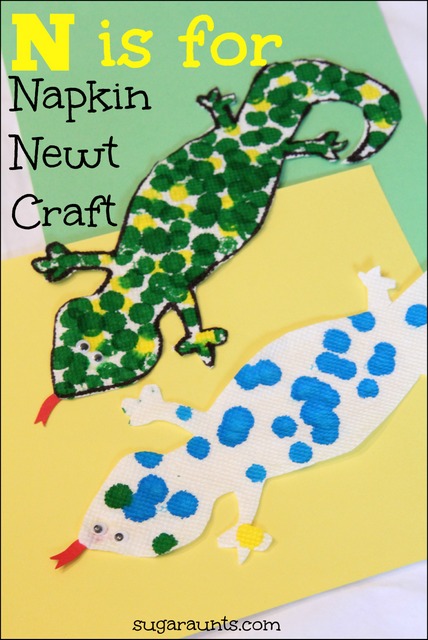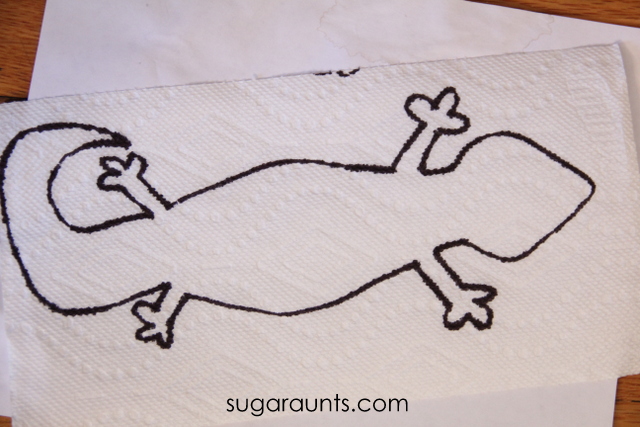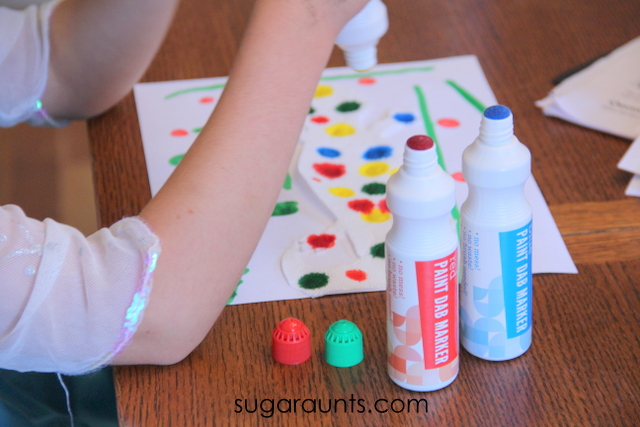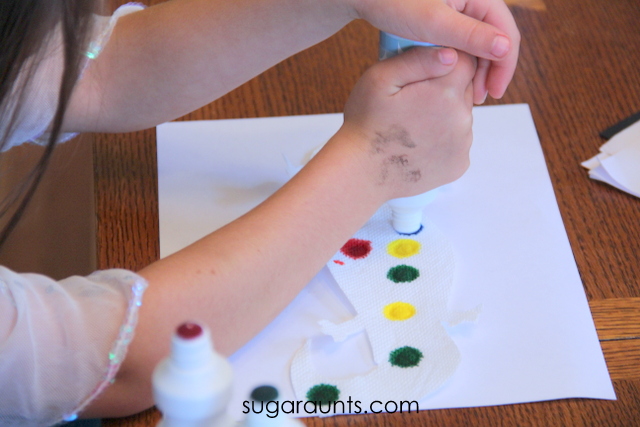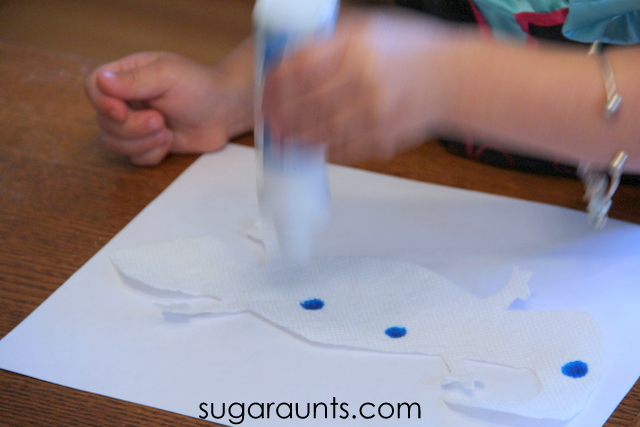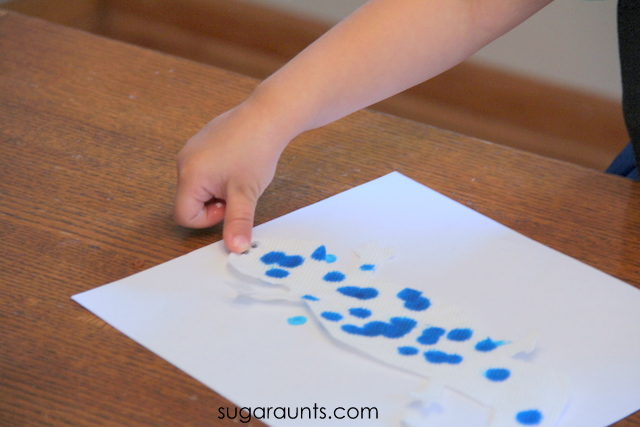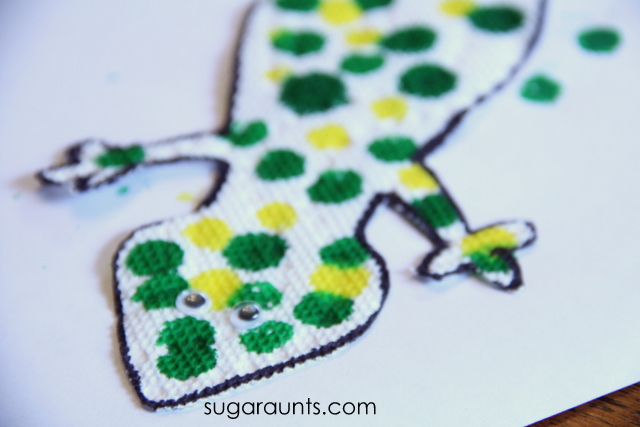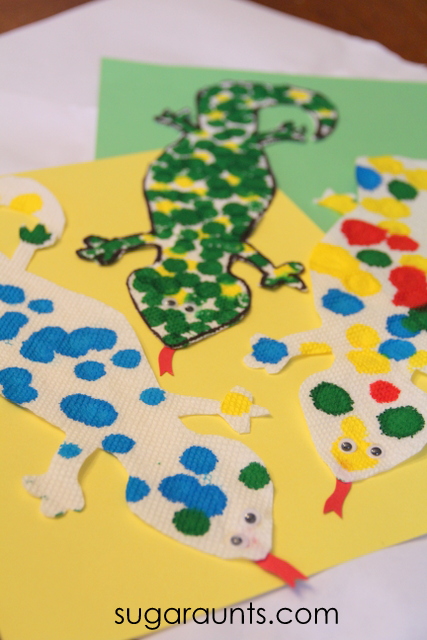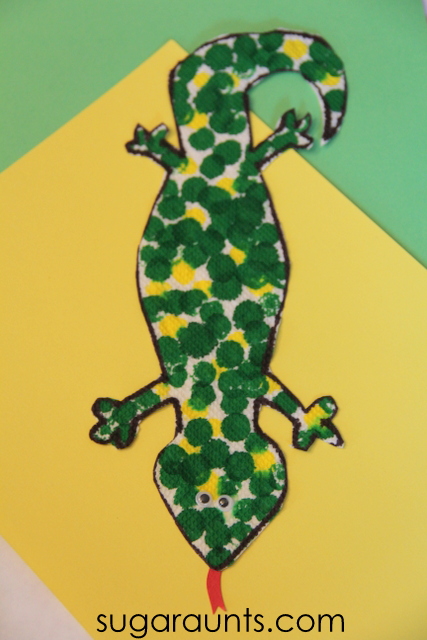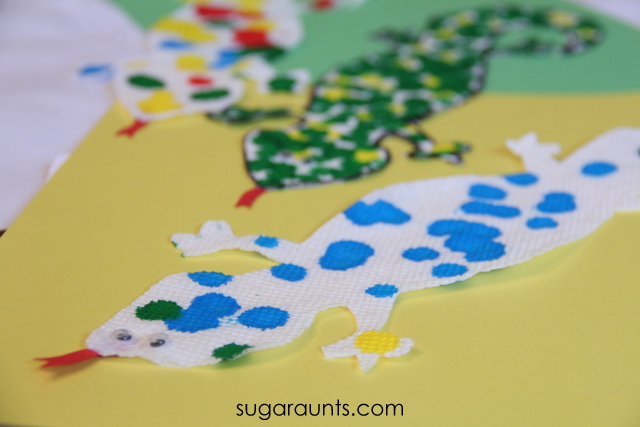Skipping words when reading or copying written work, noticing details about things, reversing letters and numbers, poor eye-hand coordination or being a little clumsy, difficulty with reading comprehension…these are just SOME of the ways that vision impacts functional tasks in kids. Here you will find specific strategies and vision activities that help kids build and develop the underlying areas that impact independence.
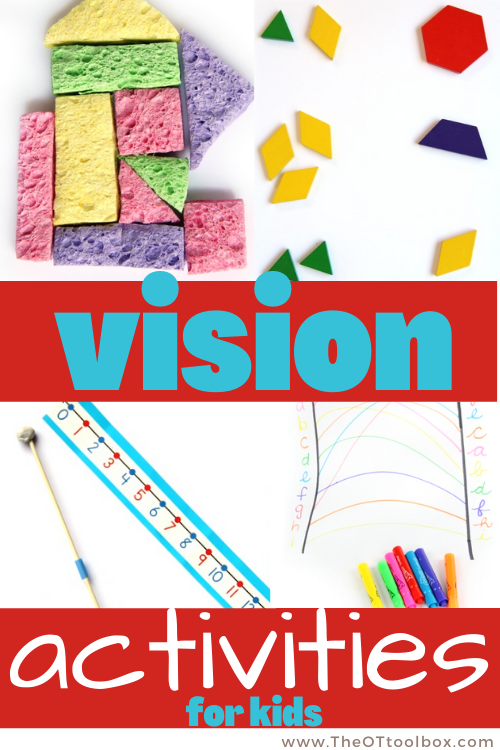
These vision activities are outlined by area that they improve, or those underlying skills that therapists work on so that kids can be independent in thins like catching a ball, writing on the lines, building puzzles, and so many other tasks.
We’ve recently put together a huge resource in our Visual Motor Skills section of the blog, which you can find under the tab at the top of the blog. Be sure to stop by and see all of the fun ways to play and develop visual perceptual skills, visual motor integration, visual figure ground, hand-eye coordination, visual discrimination, visual spatial relations, and more by checking out the vision activities for kids that we’ll be updating regularly.
Why Vision Activities?
Vision activities can sometimes be the missing piece to vision problems that we see in kids. Therapists often times working with kids with known or suspected visual perceptual or visual motor concerns, visual acuity issues, or other visual processing needs.
Teachers often have students that struggle with reading, copying, handwriitng, comprehension, attention, or focus.
Parents may have a child with a known vision issue or have a gut feeling about visual processing concerns.
Here is more information on visual processing and handwriting.
therapist Concerns
There are many concerns therapists have when it comes to vision needs in kids. Therapists need a quick screen to help identify the visual difficulties Rather than taking the extended time to work through several lengthy assessments, there is a time for evaluation, but a quick screening can pinpoint which strategy to take next.
Having quick activities to either do before or after an OT session, or to hand off to parents for home occupational therapy activities is a need for OTs. Similarly, quick vison activities that build on those underlying areas and are not disruptive to the class are sometimes needed.
Teacher Concerns
One of the main difficulties in the classroom is the impact vision has on learning. Kids struggle with visual stimulation and the inability to stay focused for any length of time due to visually processing so much information around us. Students may visually dart their eyes from not only reading scripts but anything visually available, and they are unable to filter what isn’t required for the task at hand. When this happens, the eyes don’t know where to focus, therefore tasks take longer or don’t get completed, and it’s a real challenge for the child to focus.
Handwriting is another reason to take a look at vision. Many kiddos have difficulties keeping letters aligned on a baseline, or even knowing where to place letters on a blank sheet of paper.
So many kids cannot visually attend to an object to even assess tracking. They will look past the tracking object and say they are looking at it or look at it for 1-2 seconds and their eyes dart in another direction. How many children have you seen that have not had the capability to maintain visual contact with an object for a sustained amount of time? When this occurs, reading and handwriting can be a real problem?
Vision Therapy
There is an overlap in interventions between vision therapy and occupational therapy. Much of the vision therapy research covers the vary skill areas that occupational therapy addresses in it’s OT activities.
So often, these two professions intervene in those vision activities that address the very areas kids struggle in:
-More and more kids who can not visually track- leading to trouble with reading and learning…
-Kids of various levels and abilities who struggle with interventions to address visual motor deficits…
-Students with real difficulties with reading and need strategies that make a difference in the classroom…
-Kids challenged by limited exposure to motor activities that translate to visual motor difficulties…
–Kids struggle with orthographic memory (spelling patterns and knowing if a word looks right), but they have high levels of visual acuity.
-Many students have difficulty with visual memory and visual attention which makes it difficult for them to copy words or sentences. They require visual and verbal cues to refer back to the sample and often can only recall and copy one letter at a time.
Vision Definitions
Before we cover various vision activities, we will go over the vision definitions for terms that relate to all things vision. This guide to vision can help you better understand what’s happening in those eyes.
Under each section are links to activities to build each skill area.
Visual Motor Integration- Visual motor integration includes the overarching umbrella that contains several areas, including visual perception, visual processing skills, and eye-hand coordination. The integration of these areas enables the eyes to perceive information through the vision functions (described in further below) and process information, resulting coordinated hand (and body) motor actions in order to complete a task. Visual motor integration includes a perceptual component that allows for copying of letters and positioning of objects based on perceptual input.
Here are visual motor skills activities.
Eye-Hand Coordination- This eye and hand skill allows an individual to catch a ball, hit a target, or complete other motor actions based on visual information. Development of eye-hand coordination occurs from birth and continues as kids develop more physical skills.
Here is an easy eye-hand coordination activity.
– work on hand eye coordination using an everyday item…something you have in your therapy bag right now!
Jumbo Fine Motor Threading Activity– Threading and lacing is a great way to work on hand eye coordination.
Eye-hand coordination activity with letters– Sorting, manipulating, and organizing small items can be a way to boost skills with coordination exercises.
Feather Beading– Threading beads onto feathers is a creative and fun way to improve eye hand coordination skills.
Vision Functions- This includes the actions and abilities of the eyes that allow information to be perceived. Visual functions include visual tracking, visual convergence, divergence, saccadic eye movements, depth perception, nystagmus, disassociated eye movements, eye positioning, teaming, and eye dominance. Here are visual scanning activities.
- Visual Tracking- The eyes ability to follow a moving target through all fields of vision with smooth, coordinated movements in dissociation; it is also referred to as a pursuit. Here are activities to work on smooth pursuits.
Here are games for visual tracking.
- Visual Convergence- The eyes ability to follow a moving target from a distance into the midline with smooth, coordinated movements. Convergence is the technical term for “crossing your eyes”. Convergence should be easily maintained for up to 5 seconds. Here are activities to improve visual convergence.
- Divergence- The eyes ability to follow a moving target from convergence, or near point, out to a far point with smooth, coordinated movements.
Here is more information on convergence efficiency.
- Saccadic Eye Movements- The ability to move one’s eyes simultaneously between two points of fixation with smooth movements. This skill is utilized for near and far point copying without losing your place. Here are activities for visual saccades.
- Teaming- Fluid, smooth coordinated movements of both eyes in synchrony. Difficulties with teaming can lead to eye strain and fatigue, headaches, and blurred vision. Visual teaming is a big part of visual efficiency. Here are activities and more information on visual efficiency.
- Disassociated Eye Movements- The ability to move your eyes separately from your head while it is stabilized. Lack of dissociation can indicate under developed motor patterns and eye muscle imbalances.
- Eye Positioning- This refers to the position of the eyes when resting. Both eyes should be in neutral, equal position. However, it is possible that one, or both eyes demonstrates deviation in an outward or inward deviation. This can indicate an eye muscle imbalance.
- Nystagmus- Nystagmus refers to the reflexive lateral movement of the eyes post rotary stimulation. This should be present only after rotary stimulation. If it is present at rest it is considered abnormal. If it is NOT present or limited post rotary stimulation, it is considered abnormal and may indicate a vestibular disorder.
- Eye Dominance- This indicates the eye that is the stronger of the two. This eye is typically the same eye as our dominant side for motor tasks. However, mixed dominance does happen and can cause difficulties.
- Depth Perception- Allows us to perceive visual input in multiple dimensions (including length, width and depth), and to judge how far away an object is. Here is information and activities for depth perception.
Visual perception is our ability to make sense of what we see. Visual perceptual skills are essential for everything from navigating our world to reading, writing, and manipulating items. Visual perception is made up of a complex combination of various skills and systems, including sensory processing, visual attention. These visual perceptual skills are necessary together and in coordination with one another in order for use to see information and use that visual information to create responses or react with functional abilities like movement or processing. When visual perceptual skills are delayed or impaired, other areas can suffer, including: learning, social, emotional, self-regulation, behavior, attention, organization, concentration, self-esteem, etc.
Visual Perceptual Skills make up an important component of visual motor skills. For children, these abilities are necessary for so many things…from self-care to fine motor skills, to gross motor skills…all parts of a child’s development require visual perception. There are many pieces to the giant term of “visual perception”. Sub-components include: visual memory, form constancy, visual spatial relationships, visual attention, visual sequential memory, visual figure-ground, and visual closure.
Here are strategies for visual perception and handwriting.
Here are toys and games to improve visual perception.
Visual Memory– This is one’s ability to store visual information in short term memory. This skill allows us to recall visual information. When completing hidden picture puzzles, kids visually store images of items they are looking for when scanning to locate a specific shape or image. This skill is necessary for handwriting tasks when copying information from a source, such as lists of words, homework lists, and copying sentences. which direction we see them. Here is more information and activities for visual memory.
Form Constancy– This skill allows us to visually recognize objects no matter their orientation. When completing a hidden picture puzzle, children can recognize the missing object whether it is upside down or sideways. In handwriting skills, we use this ability to read and know letters and numbers no matter the position of the letters/numbers. Here are fun ways to work on form constancy.
Visual Figure Ground is the ability to locate objects within a cluttered area (think “I Spy”). Finding a red square among the pile of foam pieces is one fun way to work on this area of visual perception.
Try some of these figure ground activities:
I Spy sight word sensory bottle
Visual Spatial Relationships- This visual perceptual skill allows us to recognize and understand the relationships of objects within the environment and how they relate to one another. Here are activities to improve spatial relations.
Visual Attention- This visual perceptual skill allows us to focus on the important pieces or parts of what we see. When we “take in” a scene or image in front of us, we are able to filter out the unimportant information. In this way, a student is able to focus our eyes on the teacher when she teaches. Driving down a road requires visual attention to take in the road so we can drive safely. Visual attention is important in copy work as students copy information from a Smart Board or book onto a piece of paper. As they visually scan from one point to another, they attend to the place they left off. Visual attention is also important and very needed in reading. Here is more information on visual attention.
Visual Sequential Memory- This visual perceptual skill is the ability to visually take in and then later recall the sequence or order of items in the correct order. This skill is important in reading and writing. Visual sequential memory is important in spelling words correctly and recognizing that words are not spelled correctly.
Visual Discrimination– This visual perception skill enables us to determine slight differences in objects. In hidden picture activities, this skill is needed to determine and locate different hidden objects. When writing and reading, visual discrimination allows us to perceive the difference between “p” and “d”. Here is a visual discrimination worksheet.
More visual discrimiation activities:
Practice “b” and “d” with sensory writing
Color shape discrimination Sort
Visual Closure– This visual perceptual skill allows us to see part of an object and visualize in our “mind’s eye” to determine the whole object. When we see part of an item, we use visual closure to know what the whole item is. This skill requires the cognitive process of problem solving to identify items. Visual Closure is used to locate and recognize items in a hidden picture puzzle. In written work, we use visual closure to recognize parts of words and letters when reading and copying work. Here is a visual closure activity.

